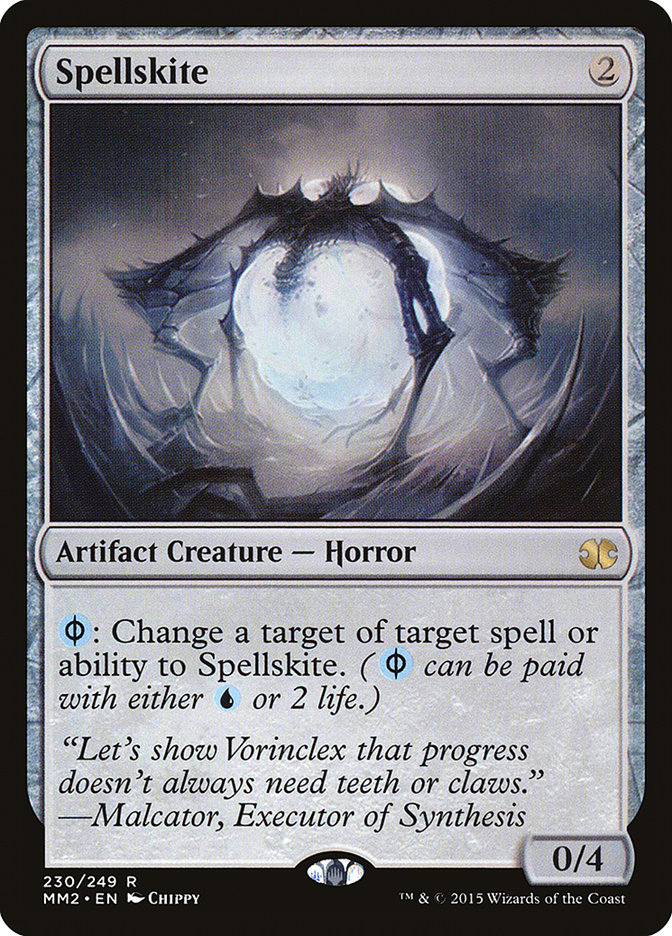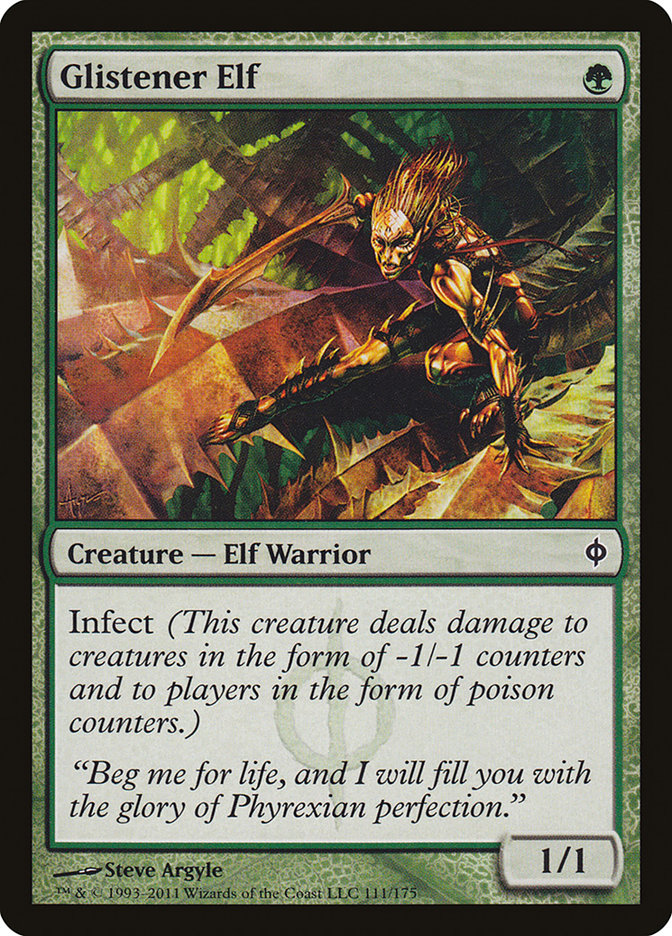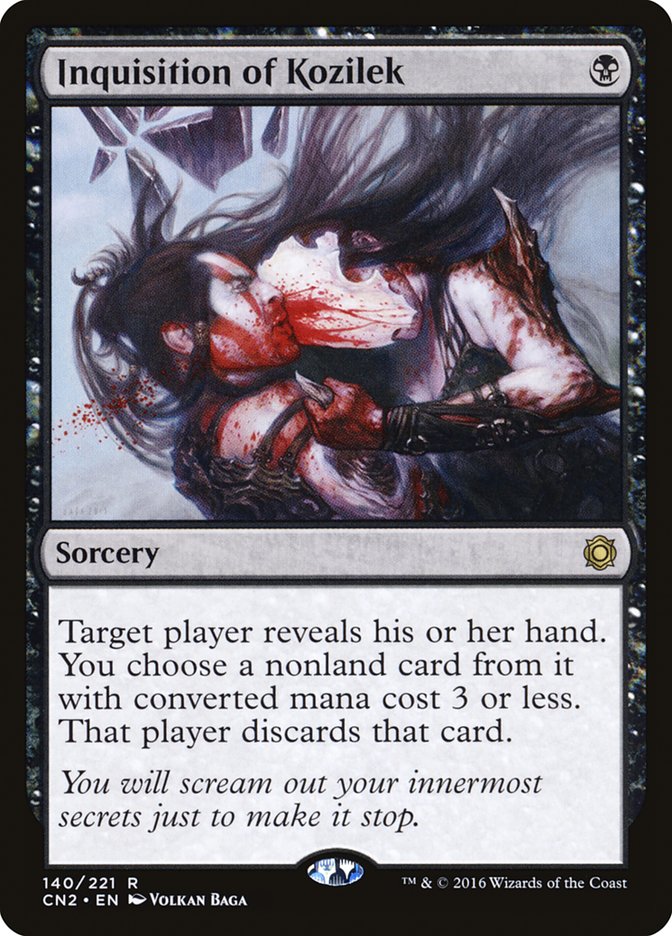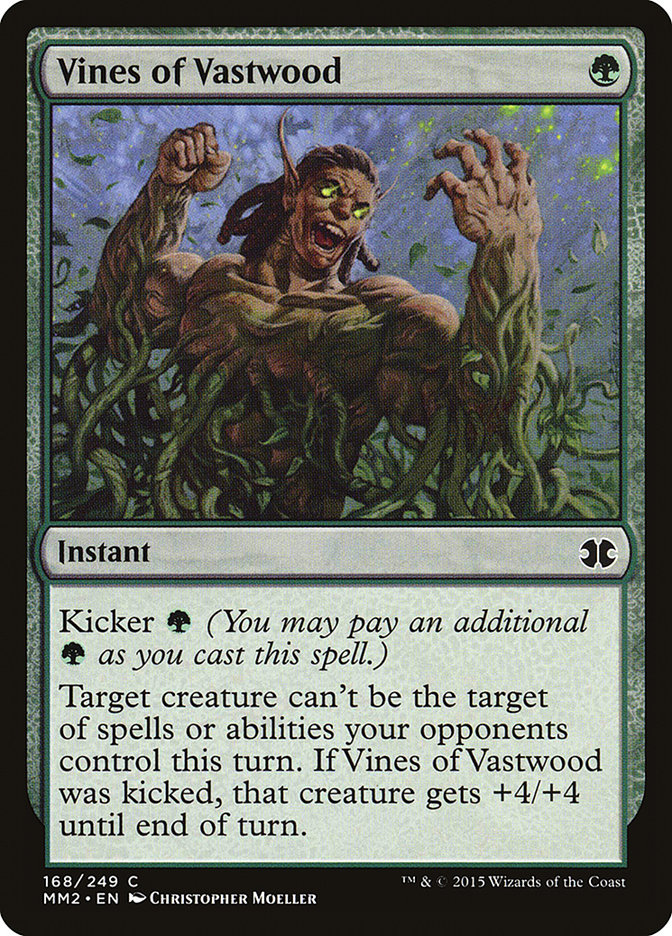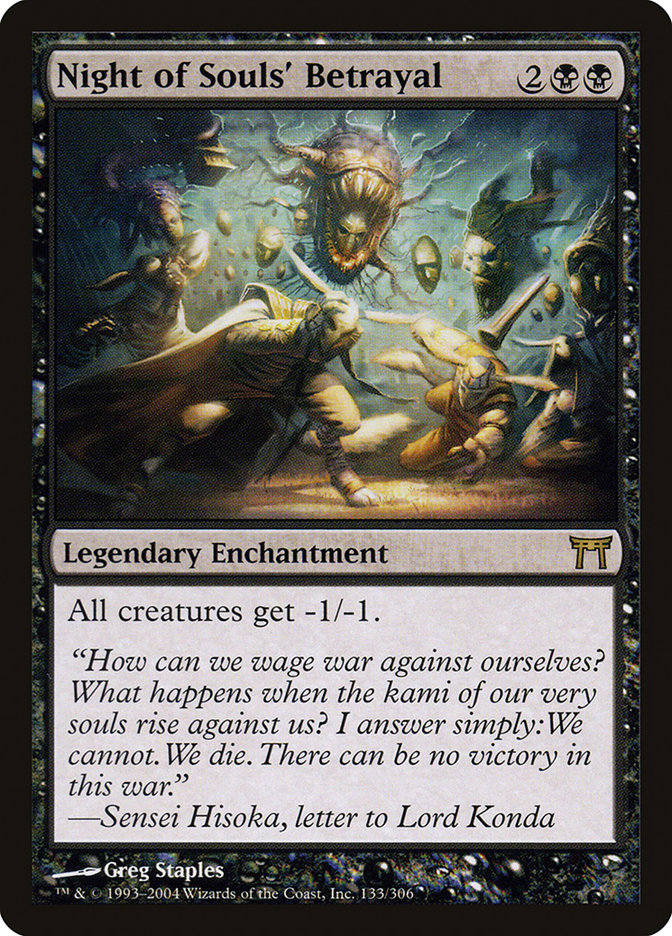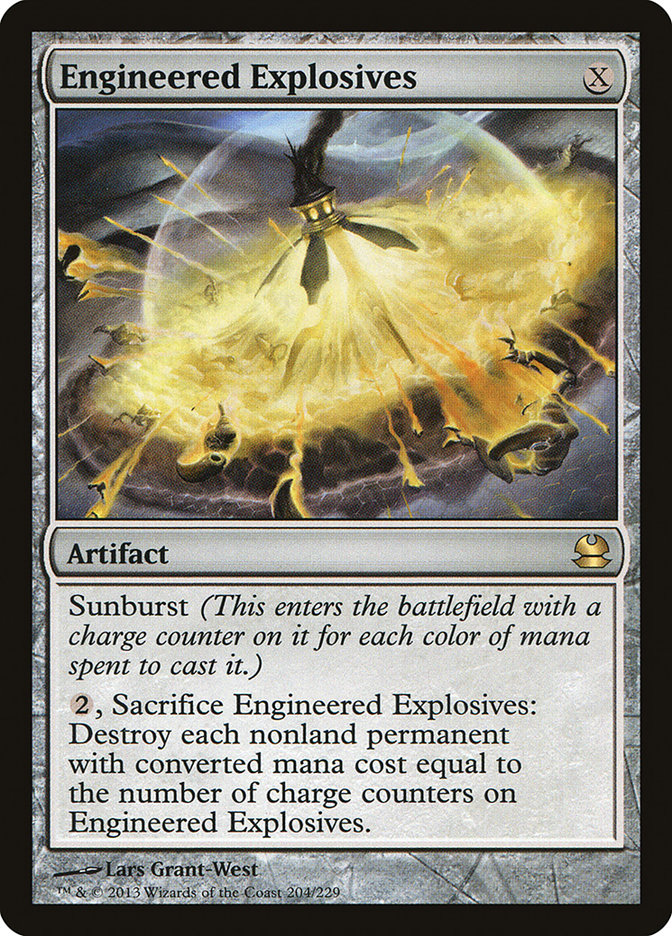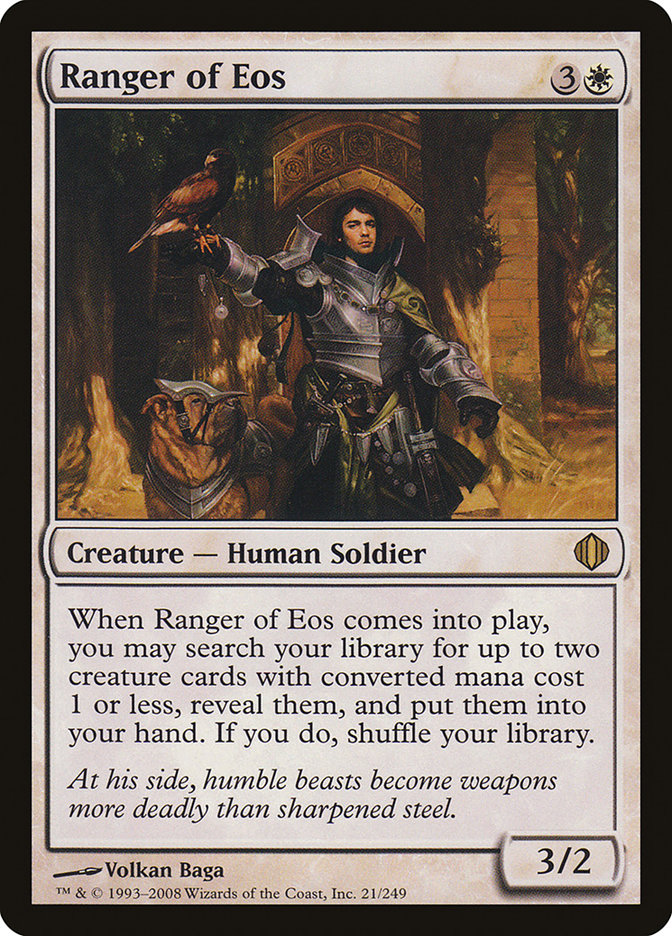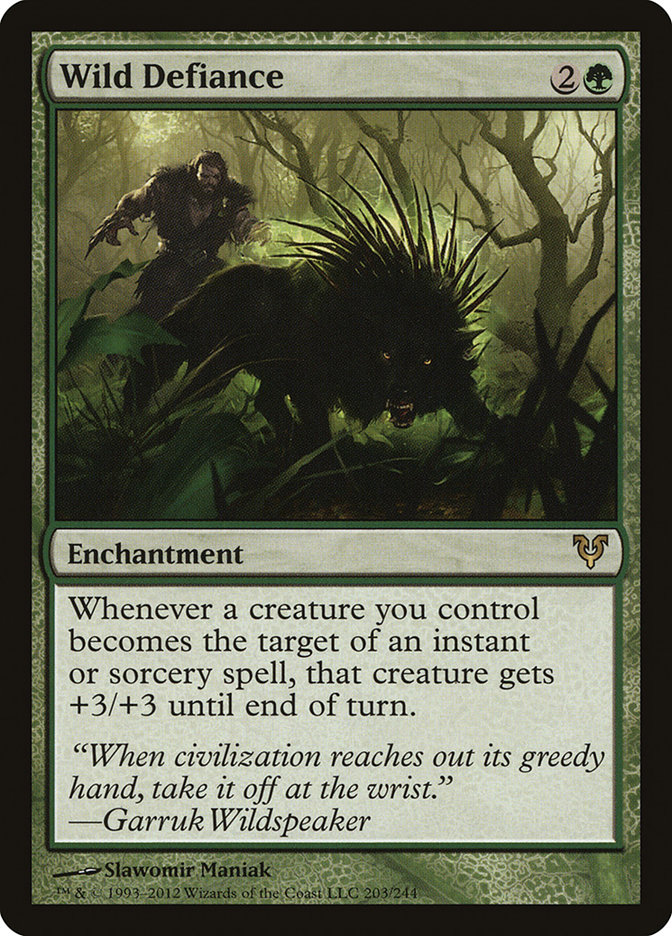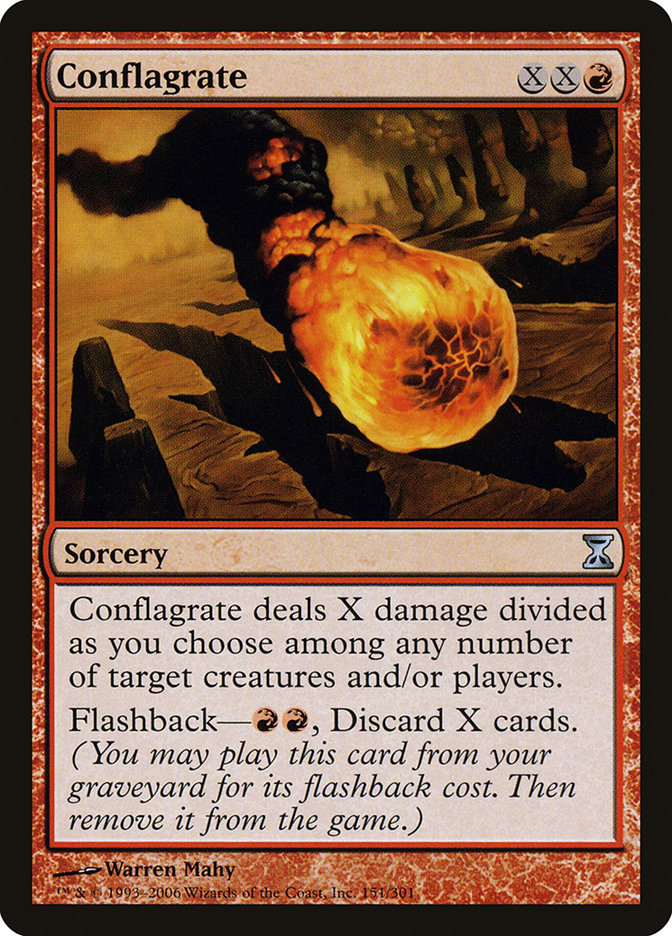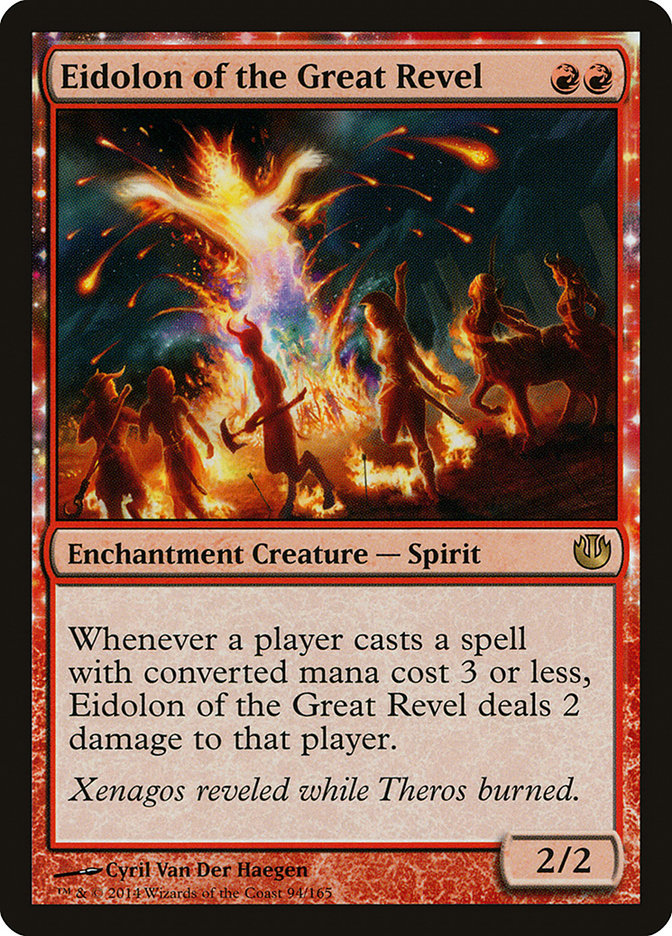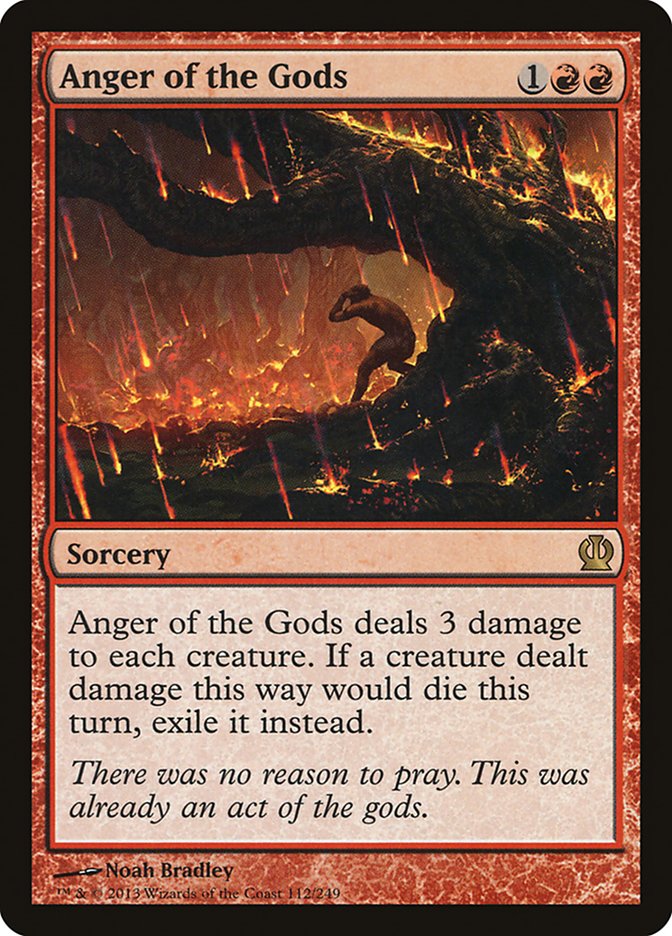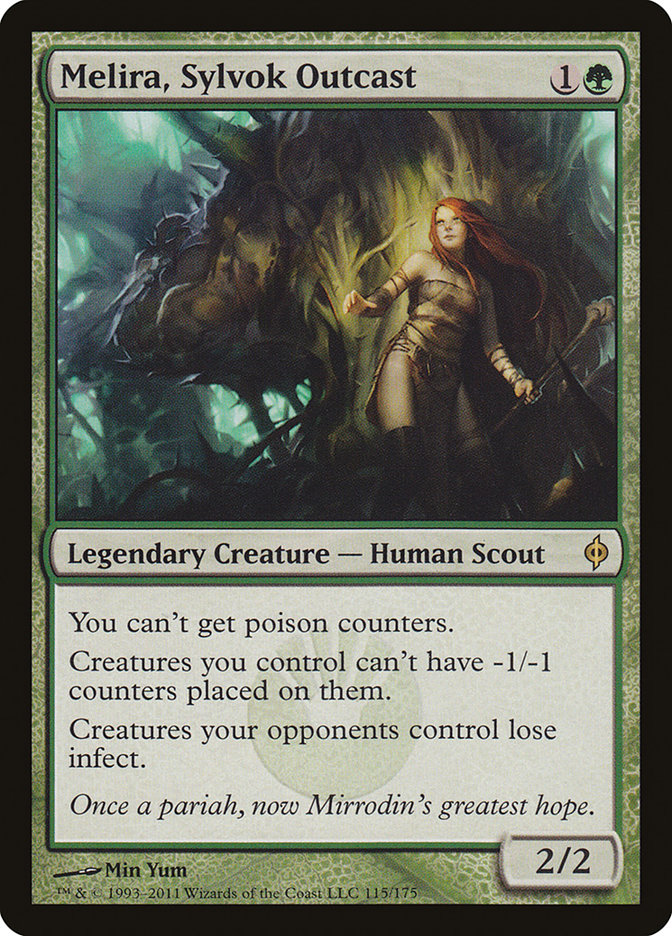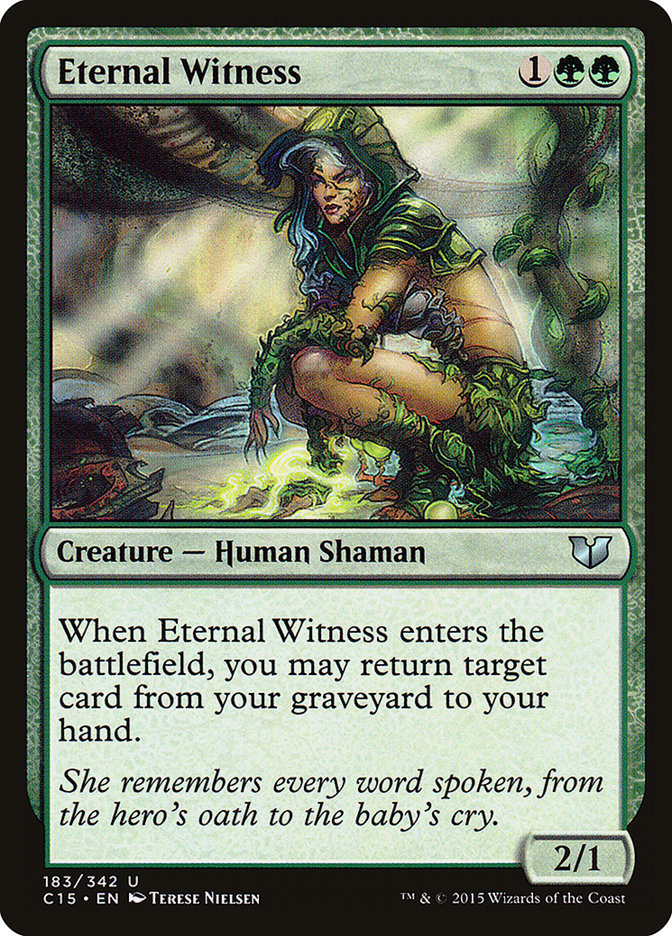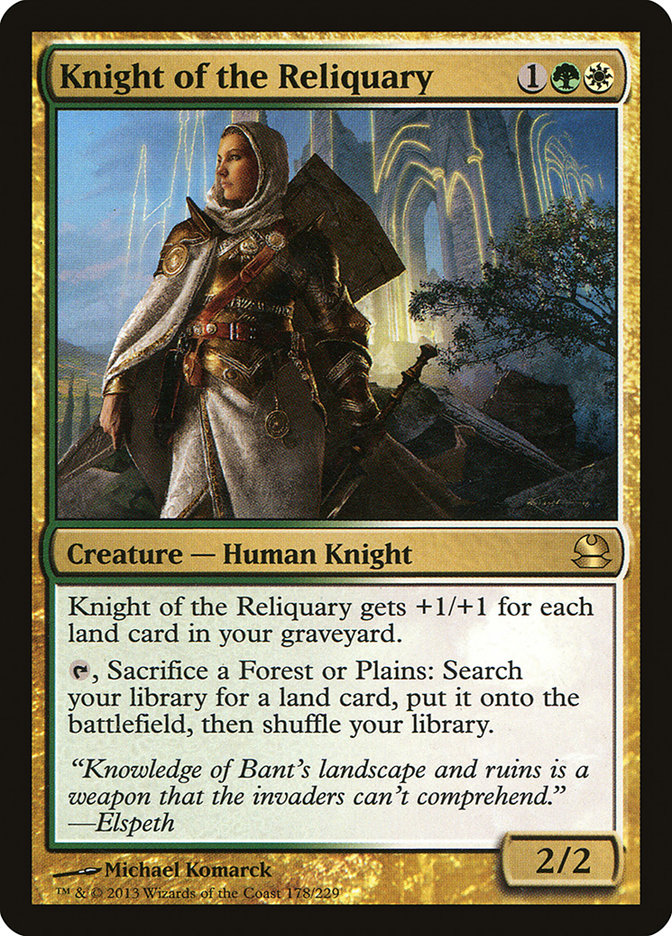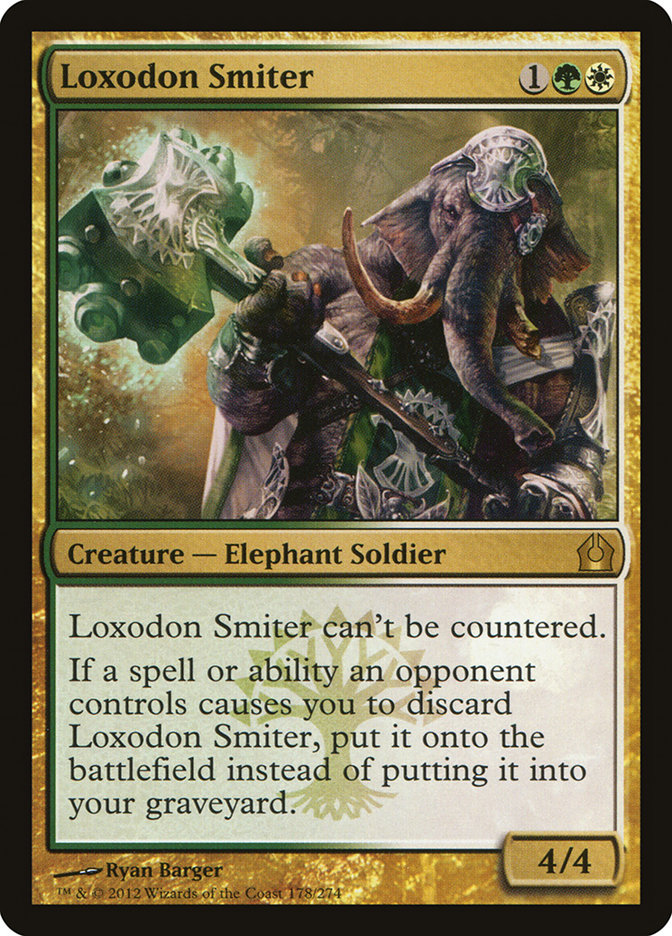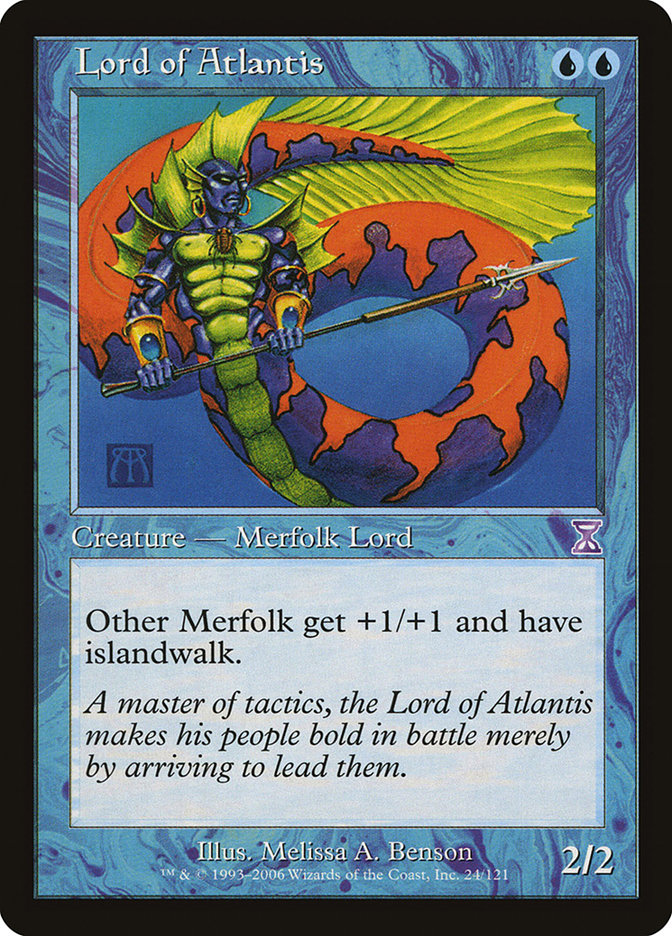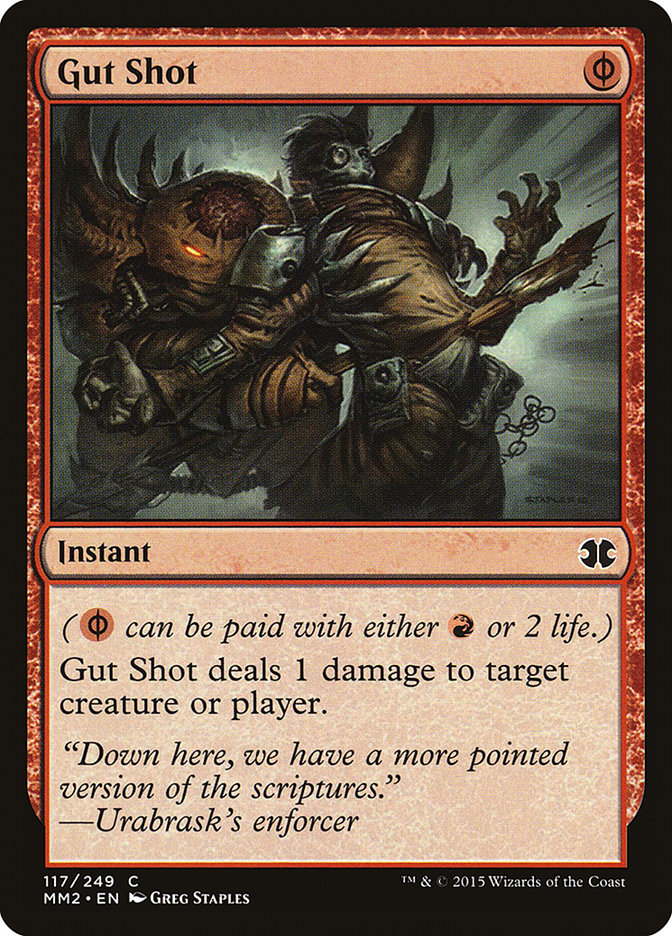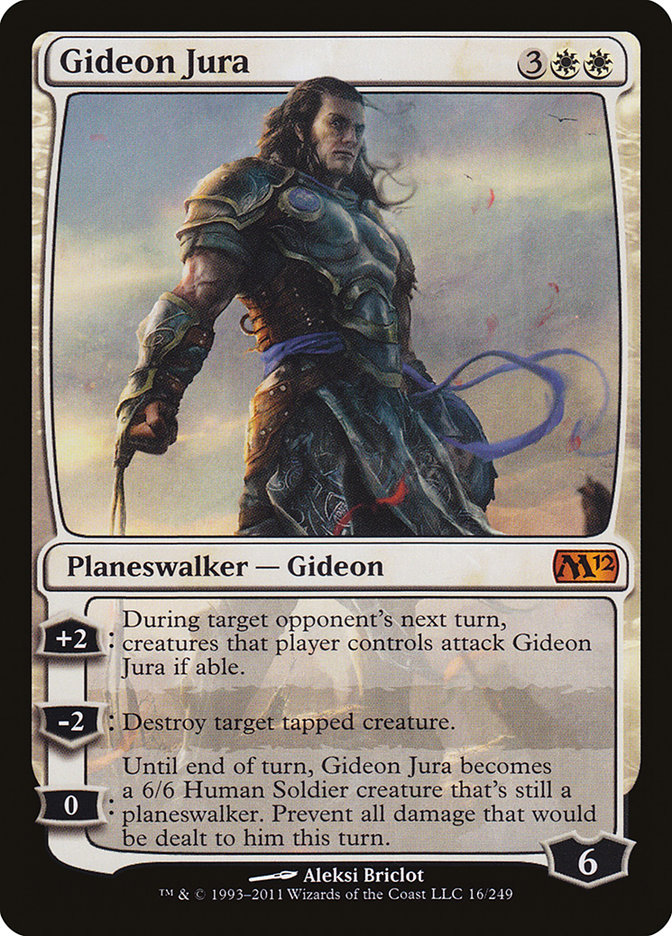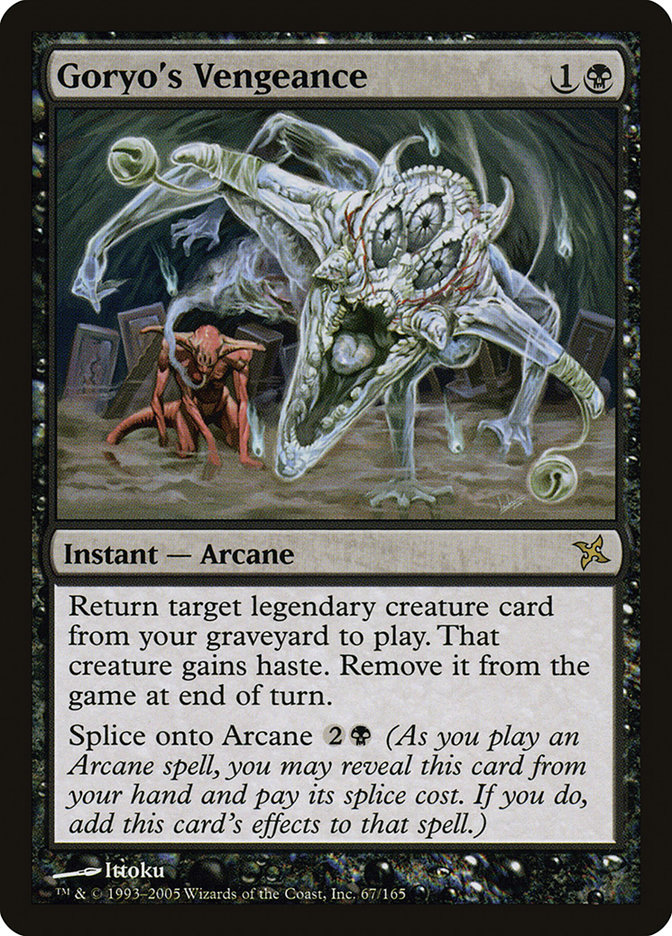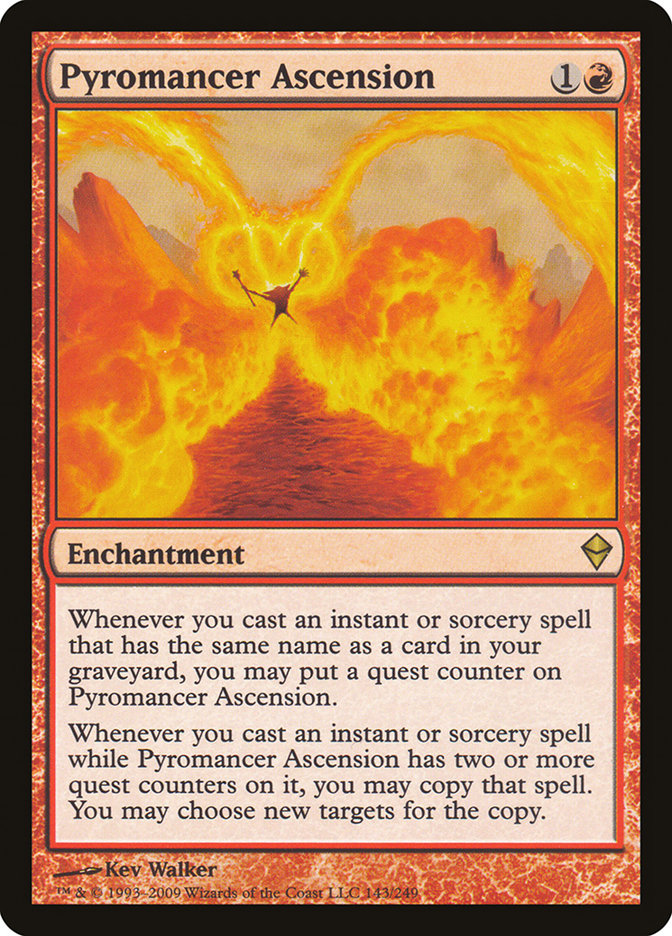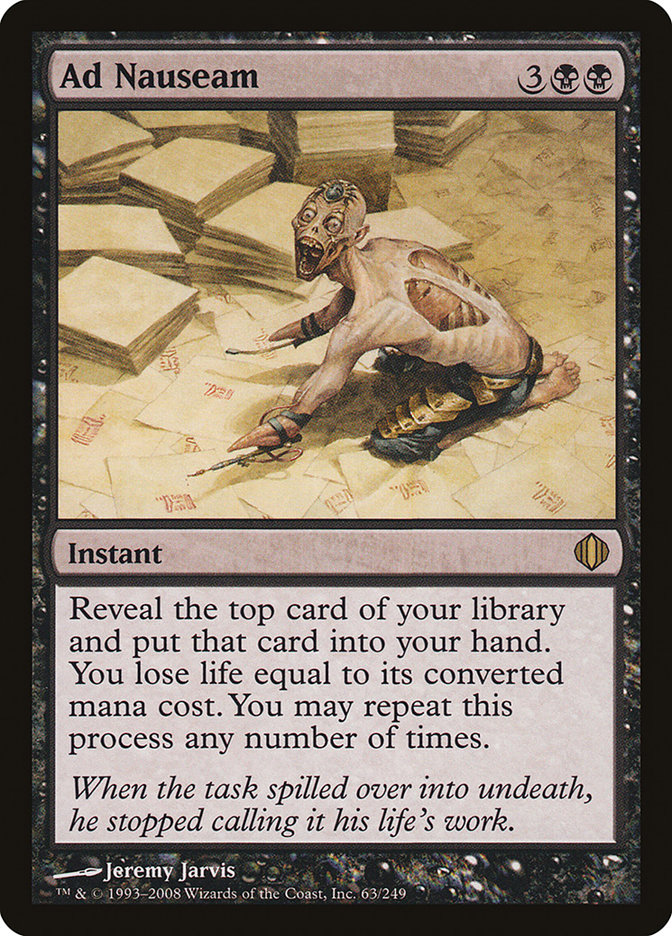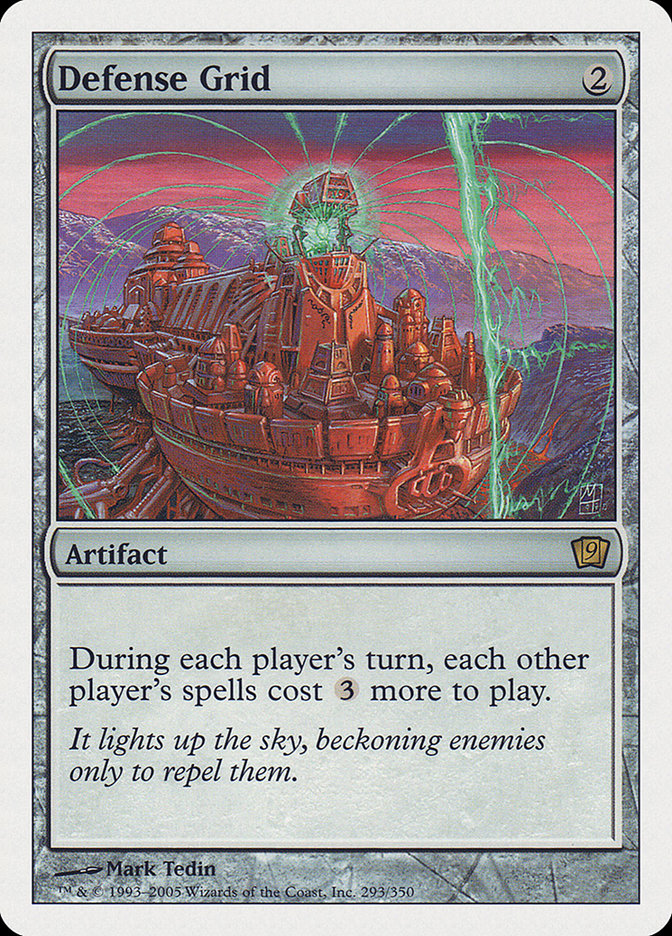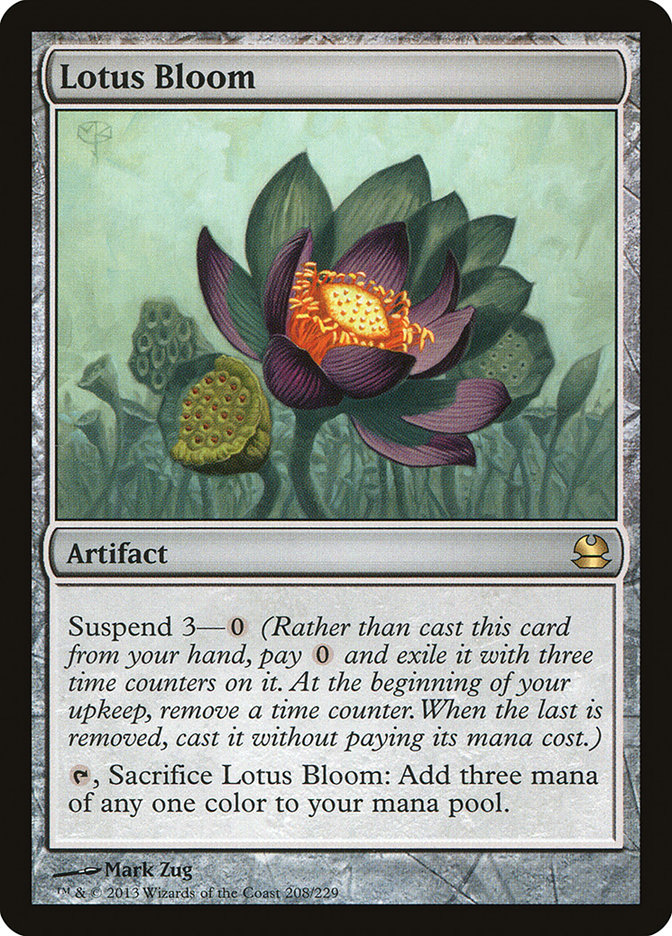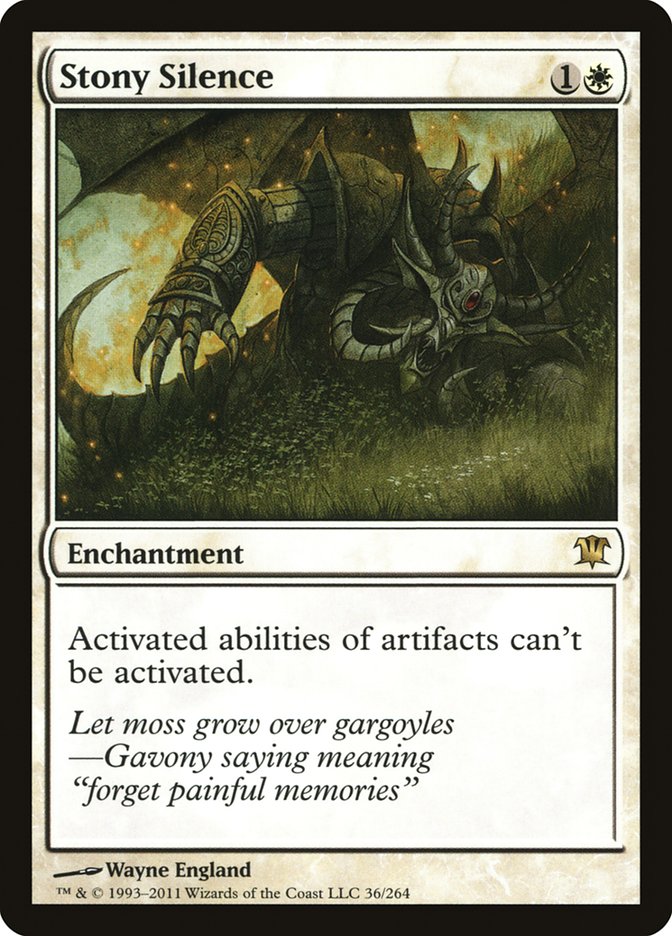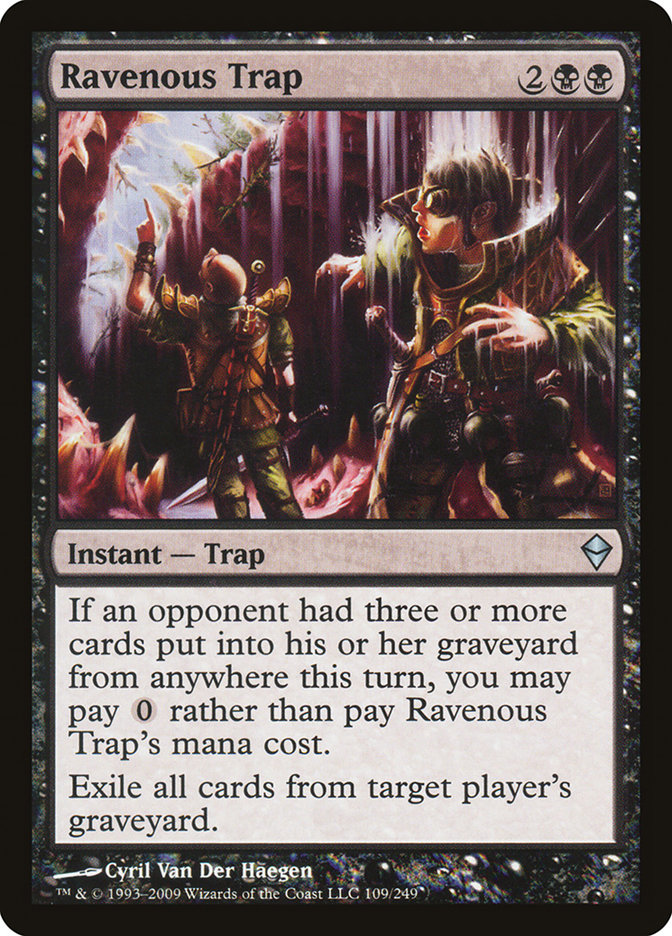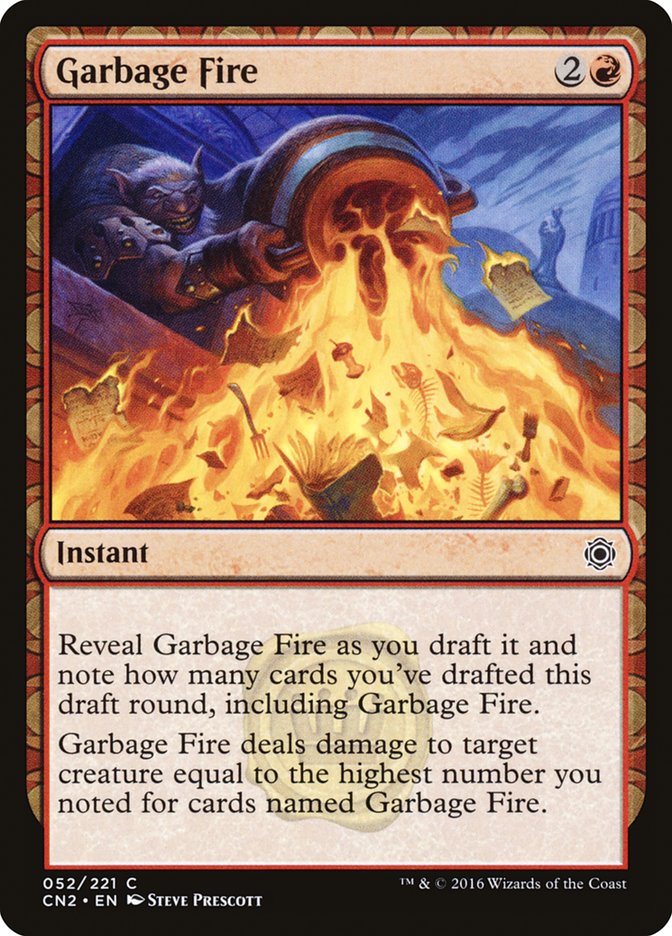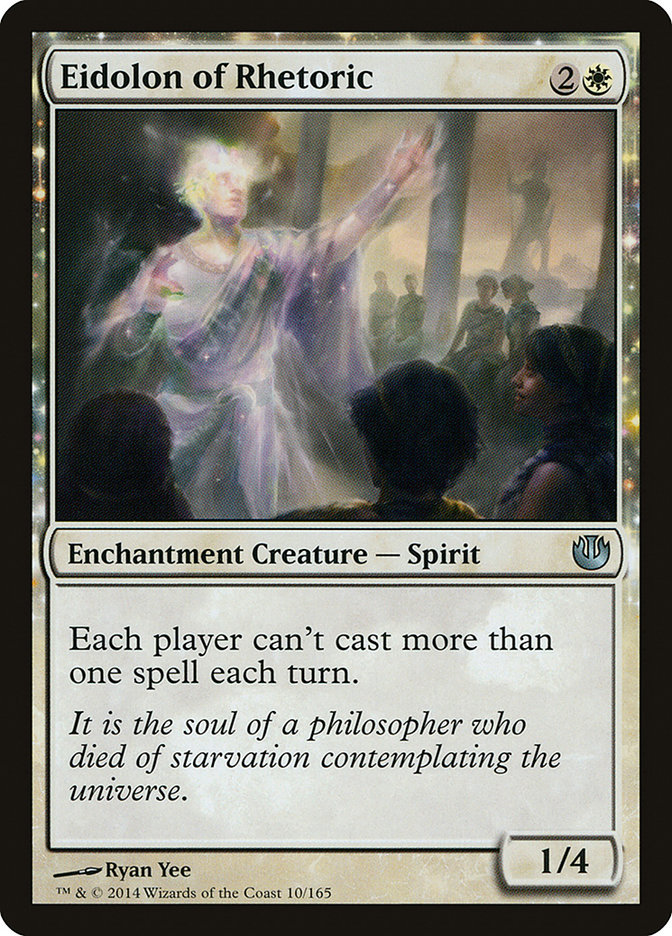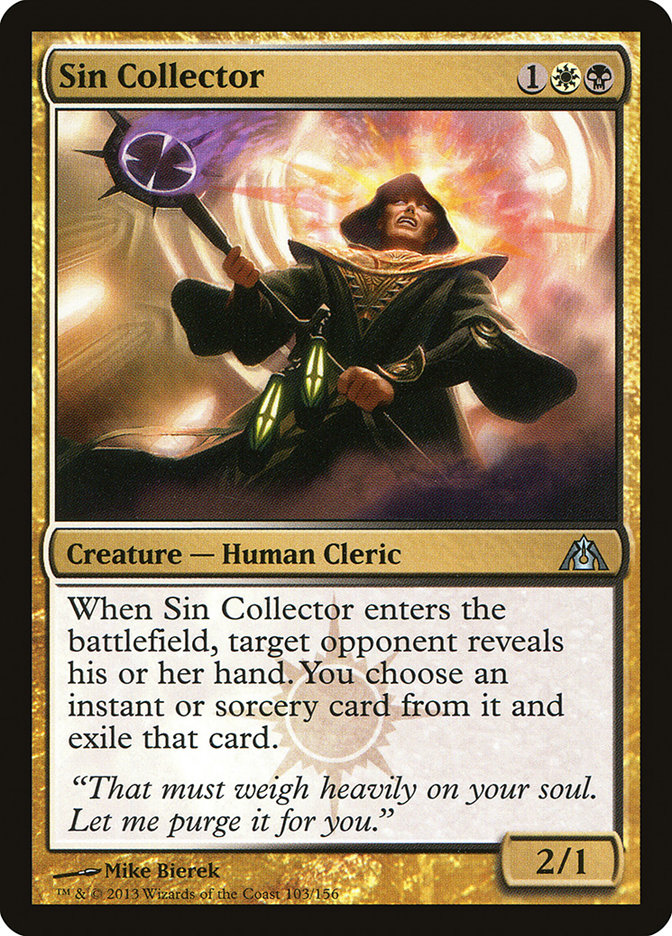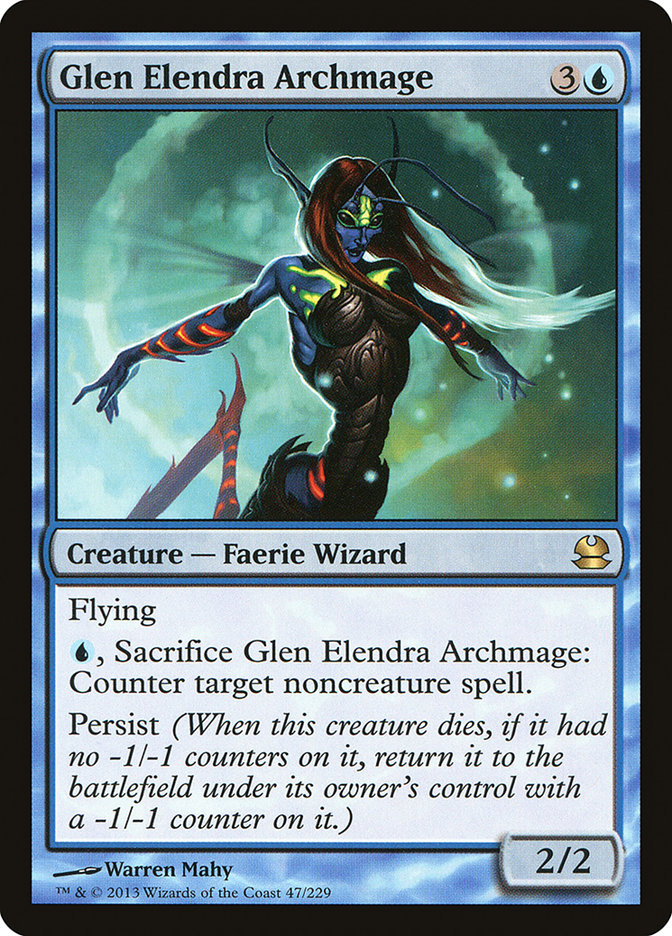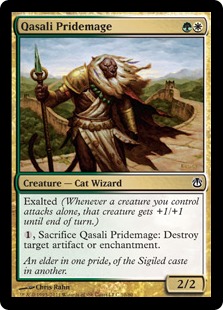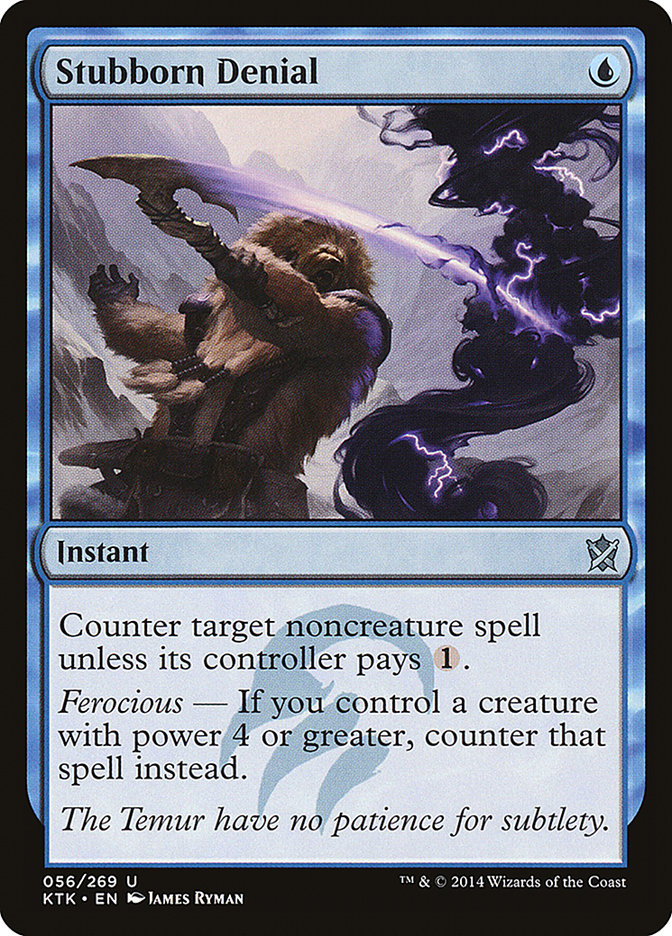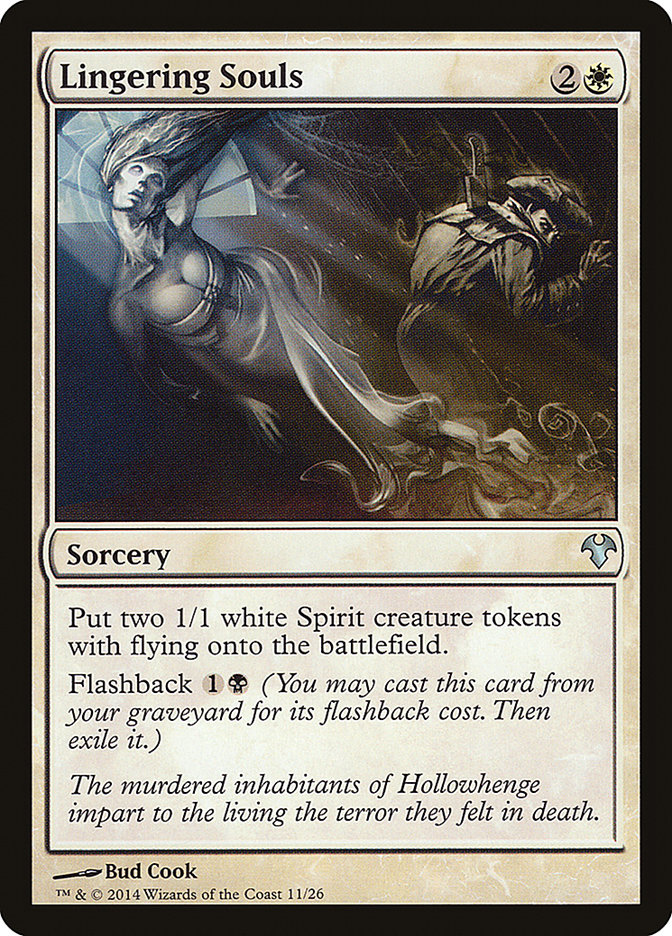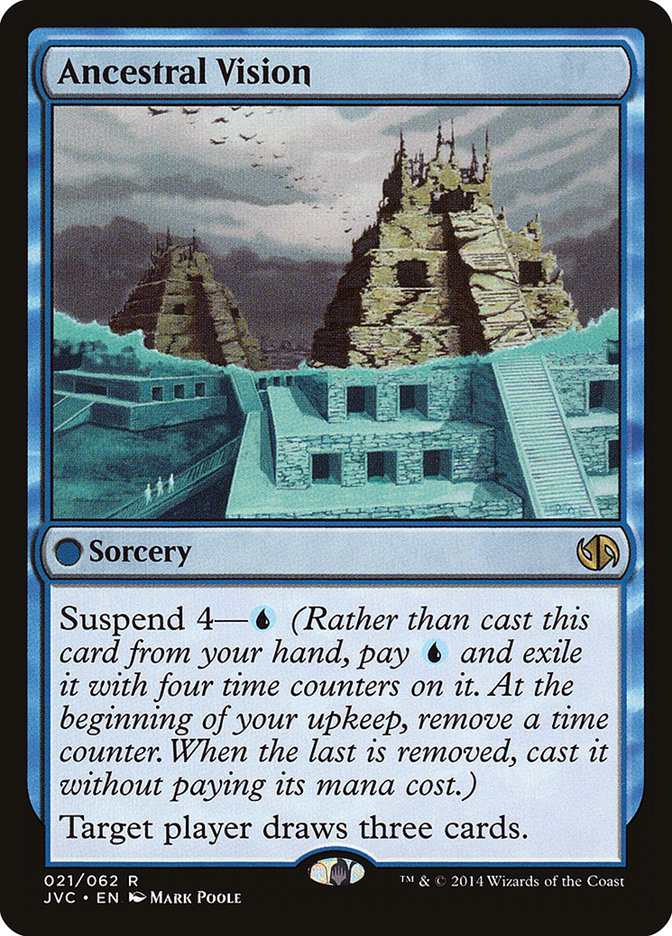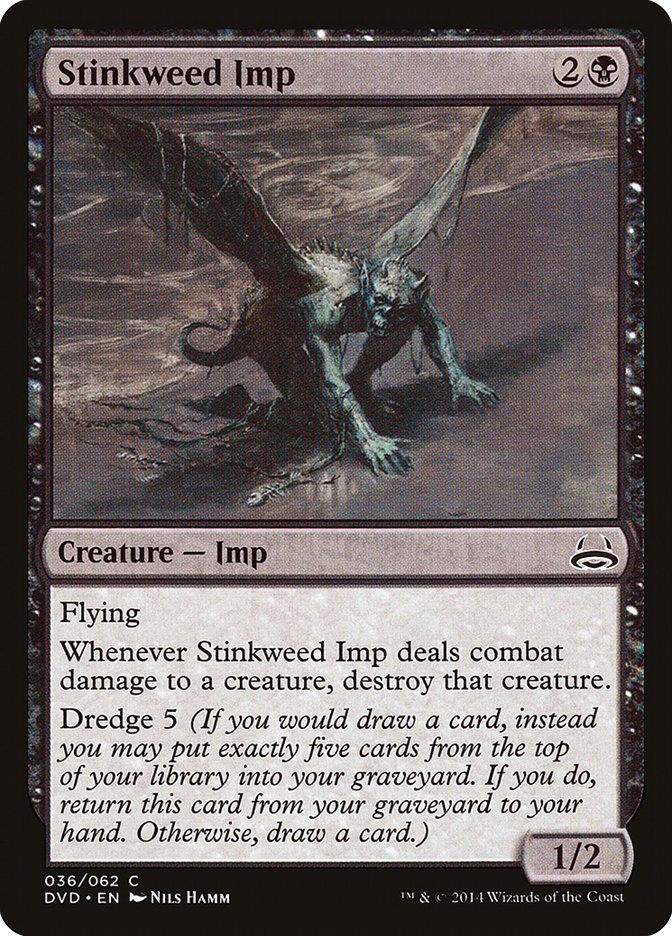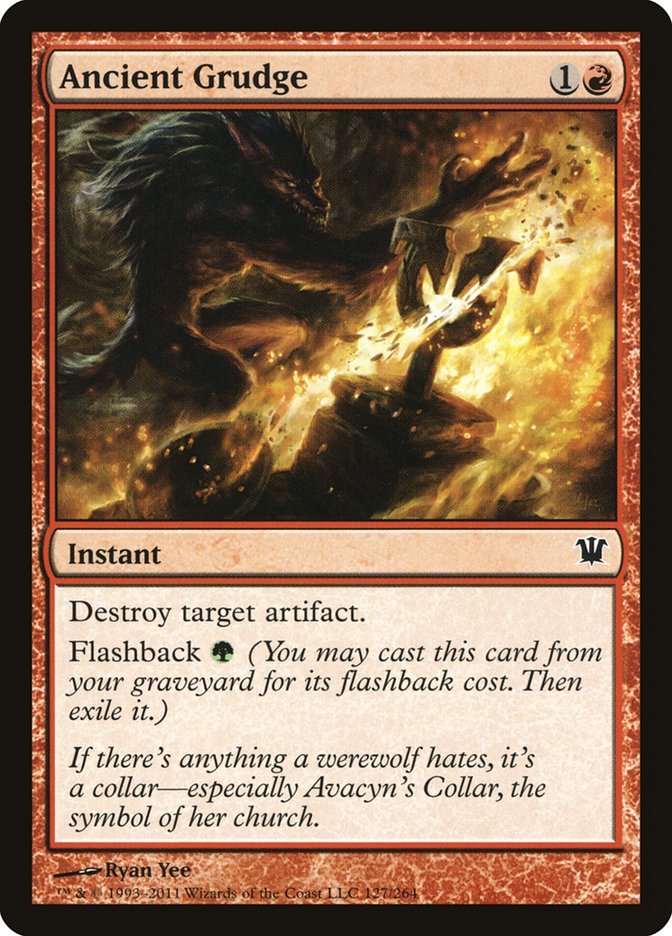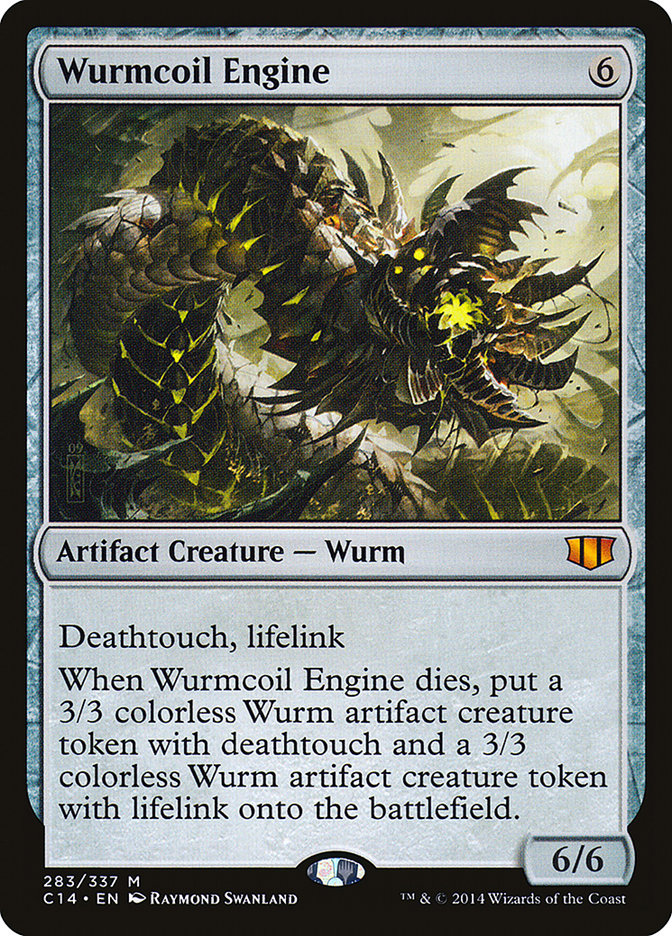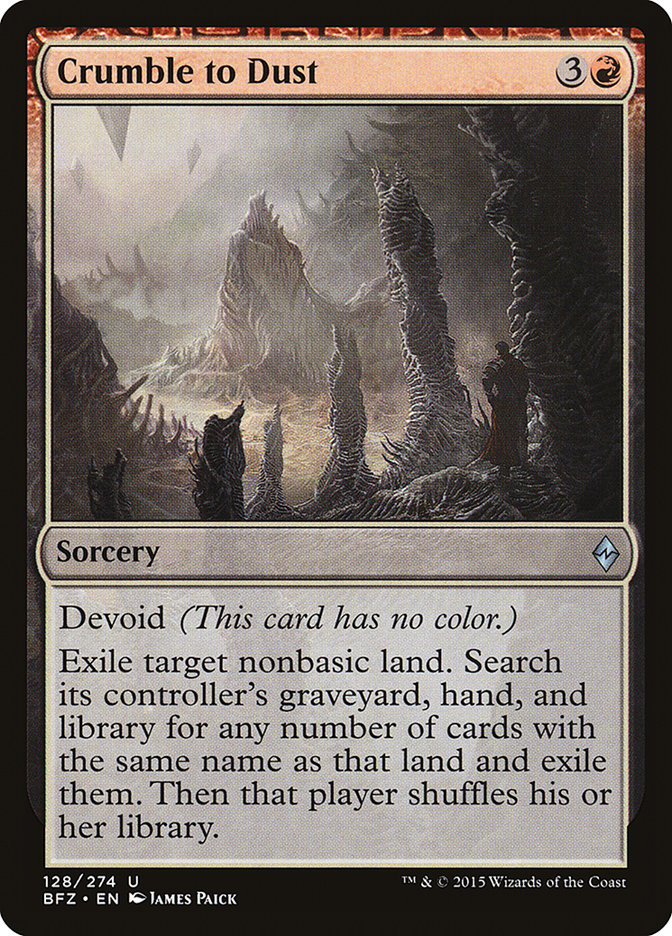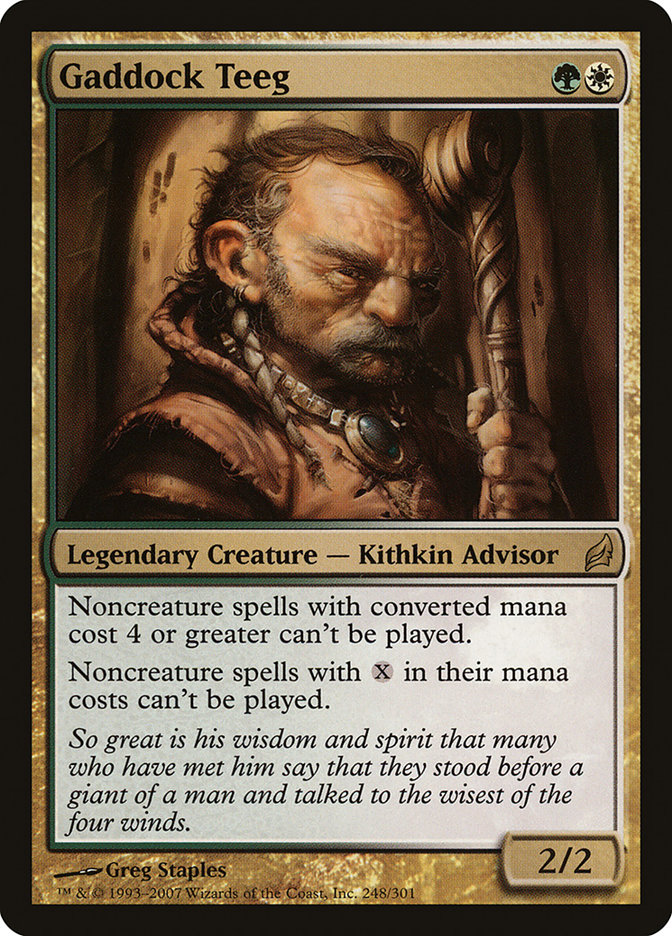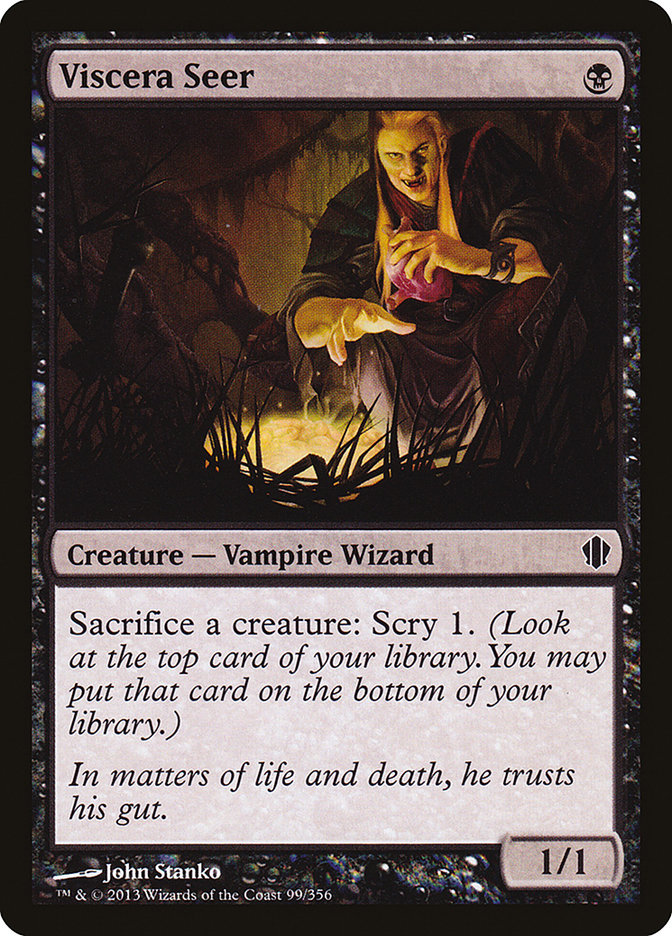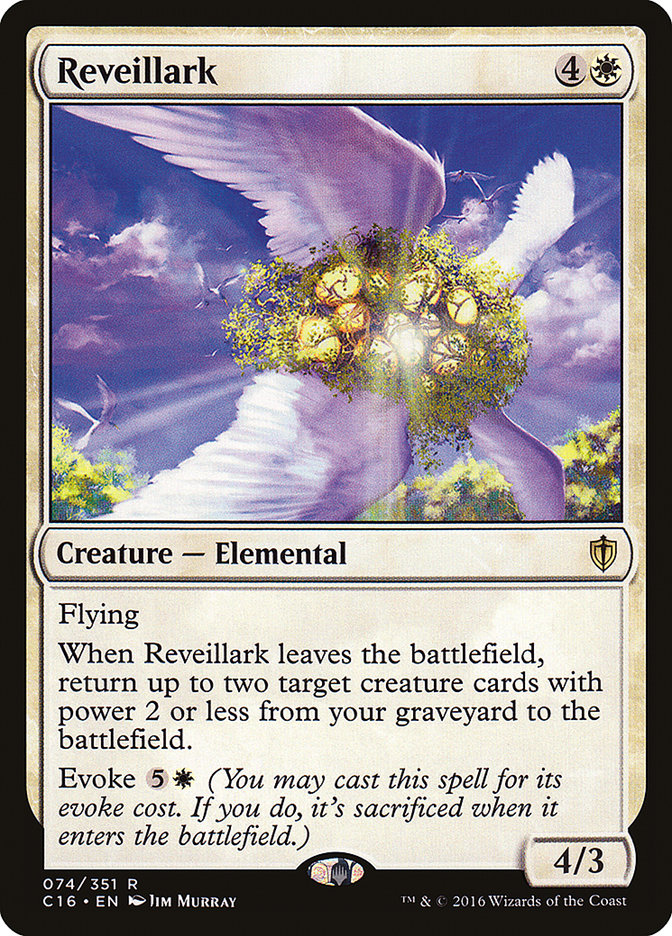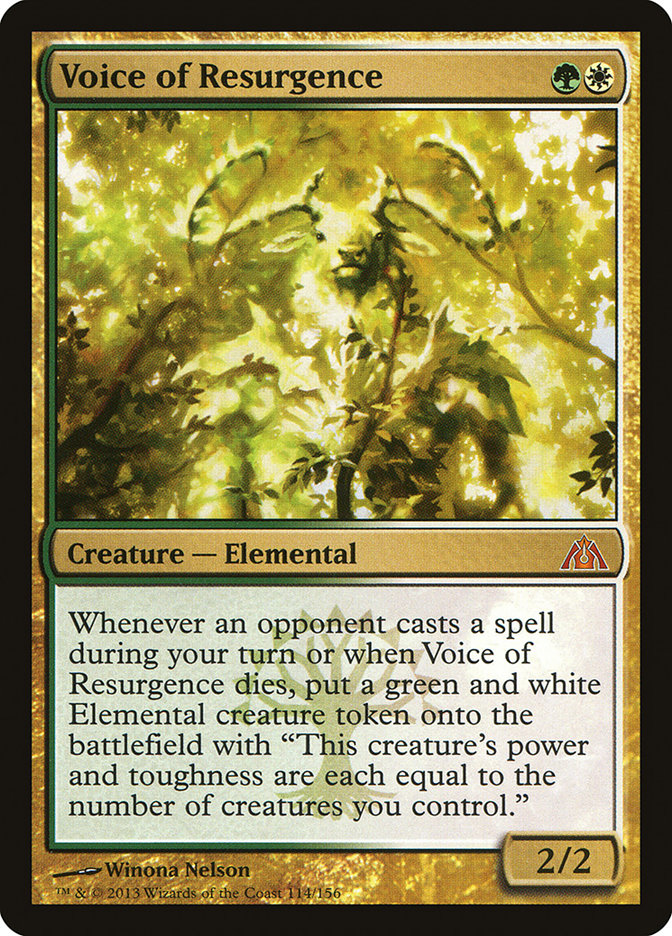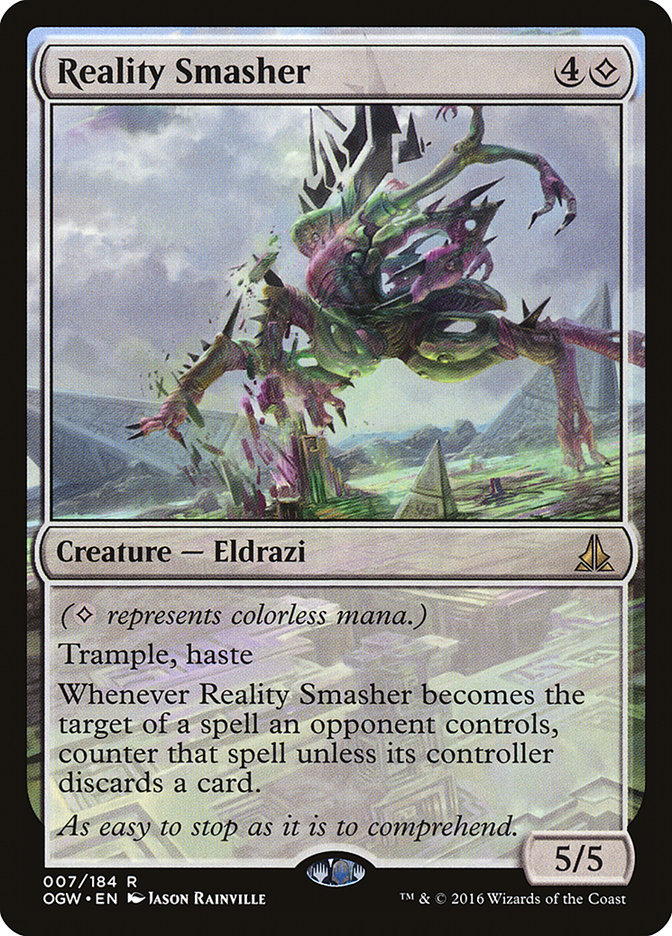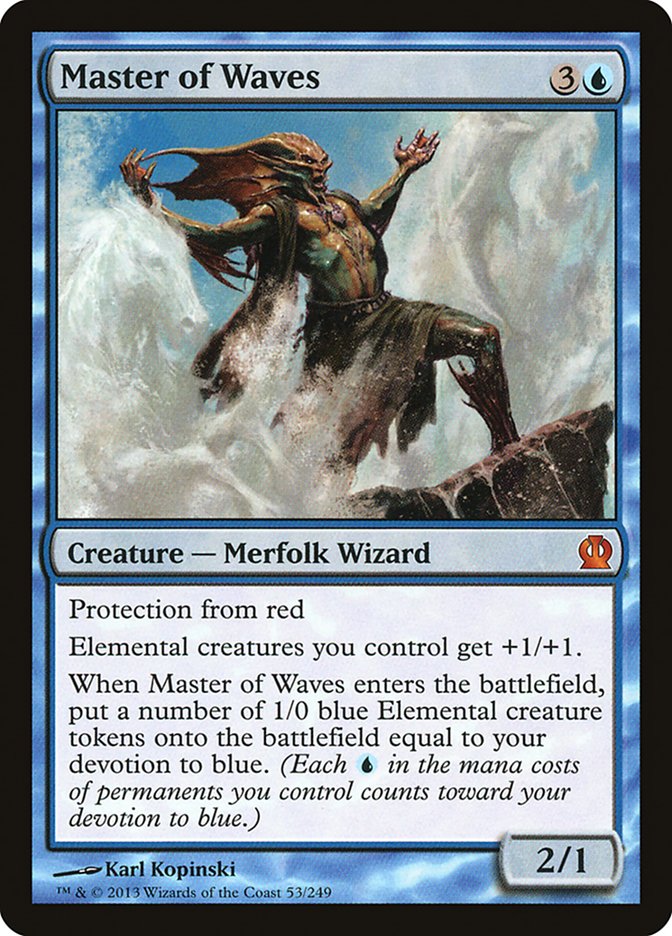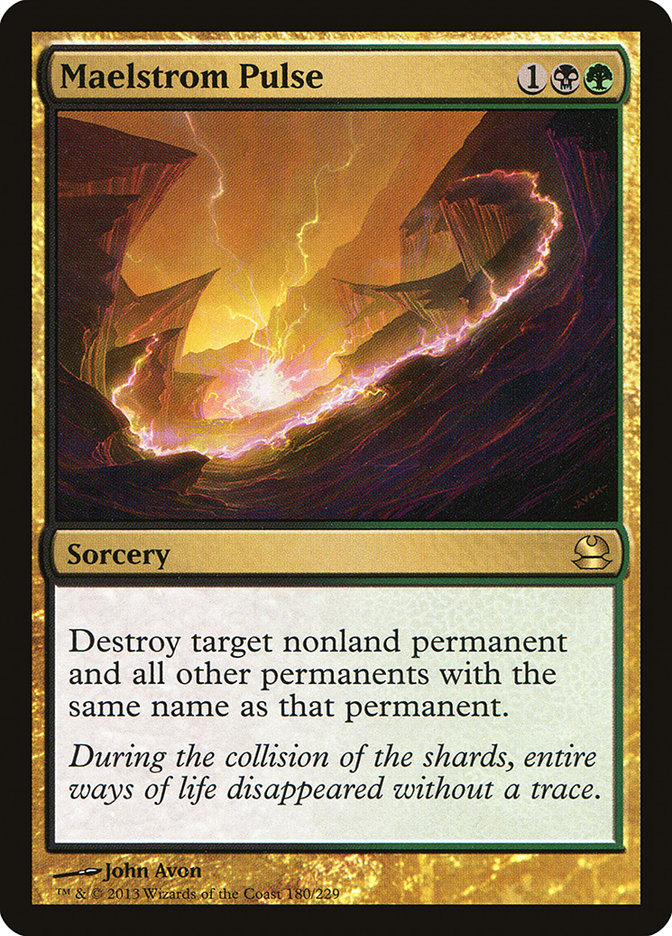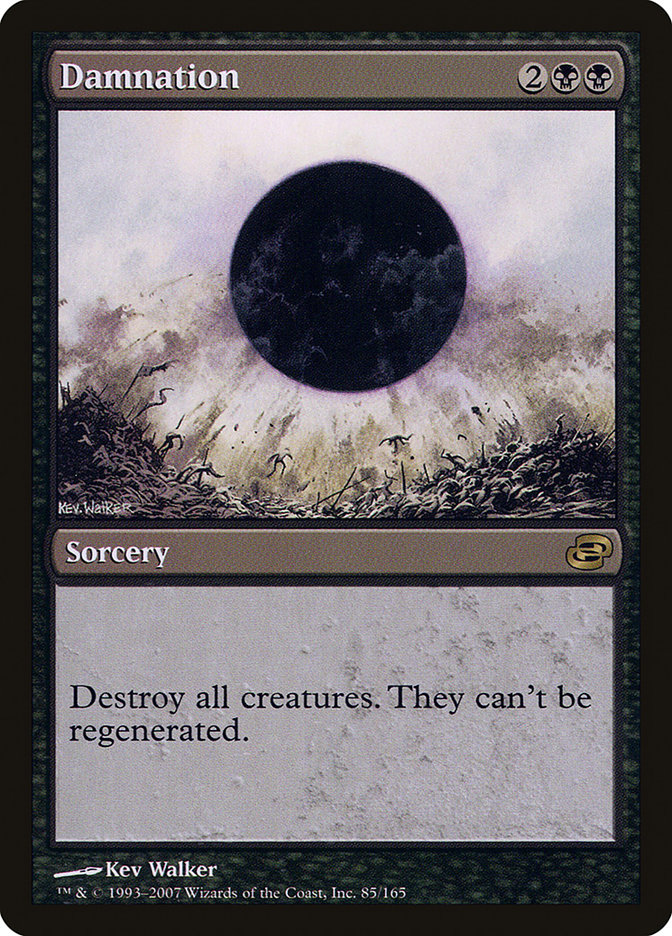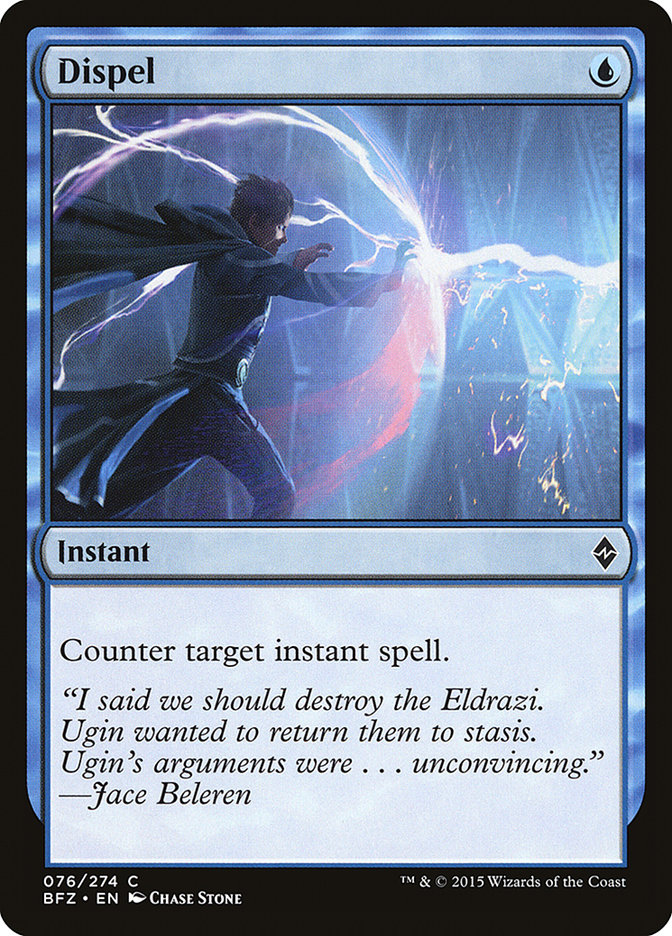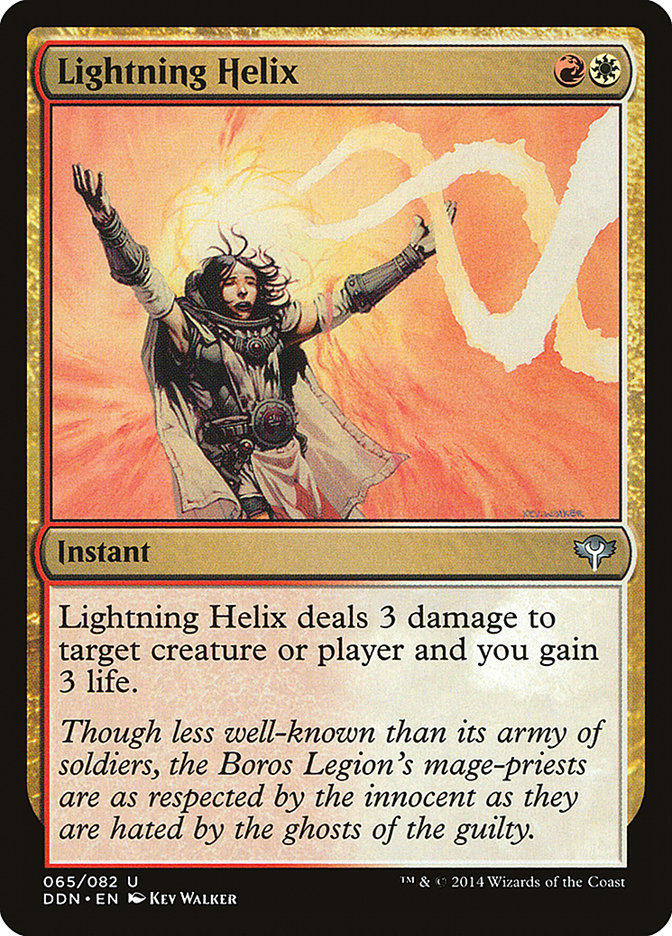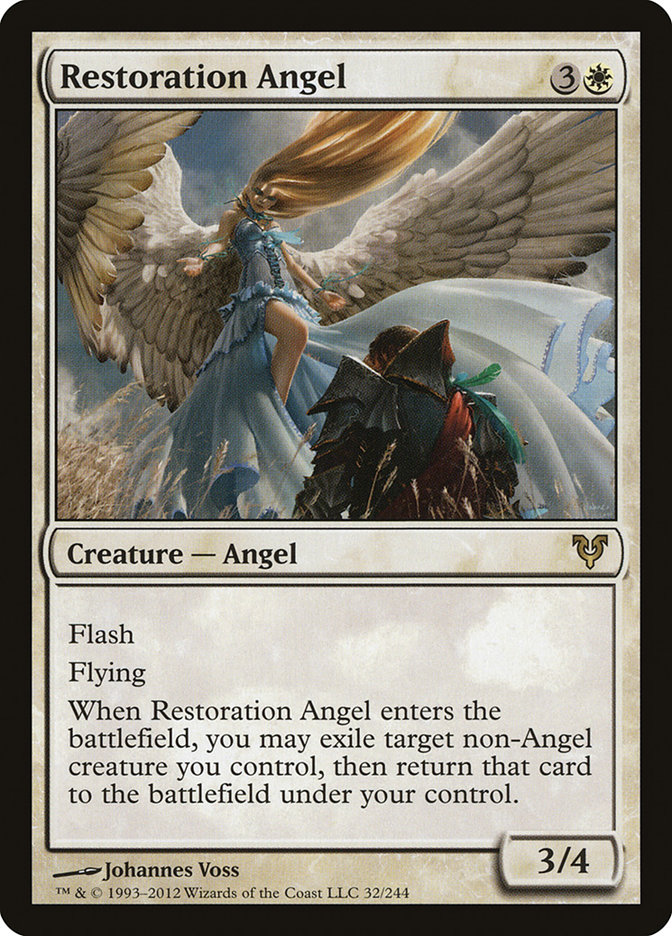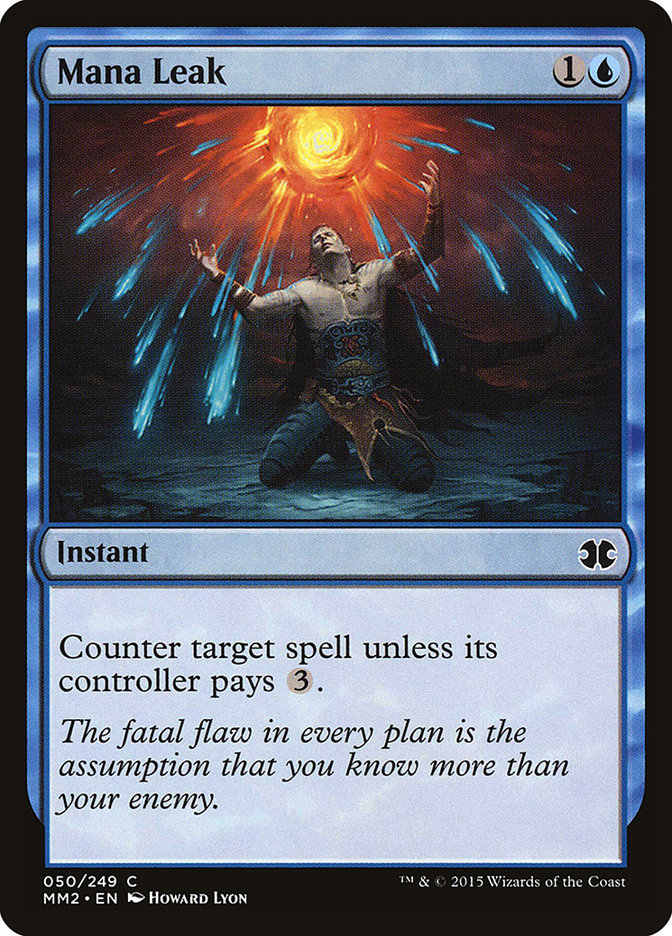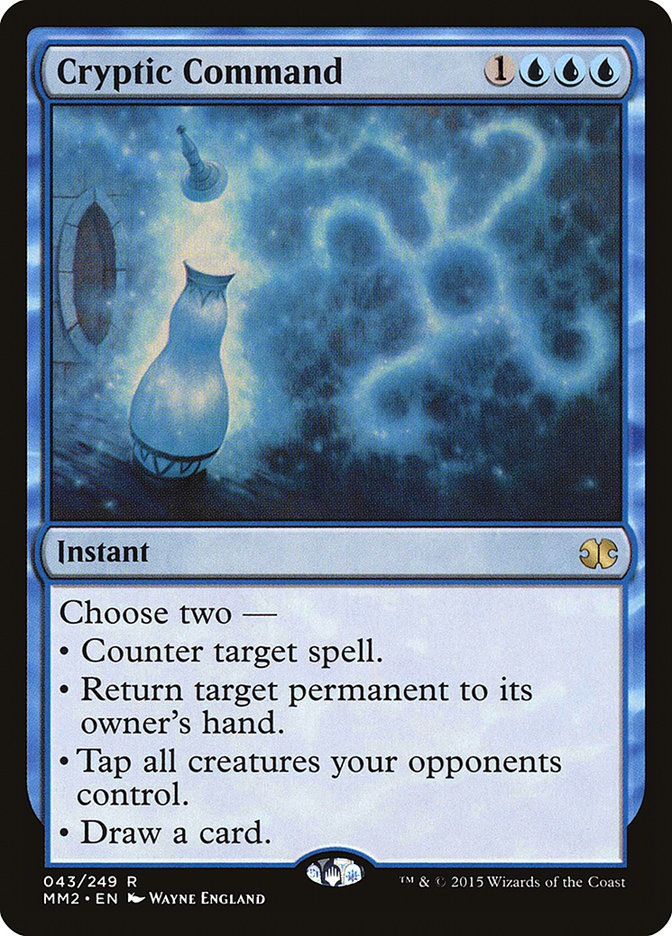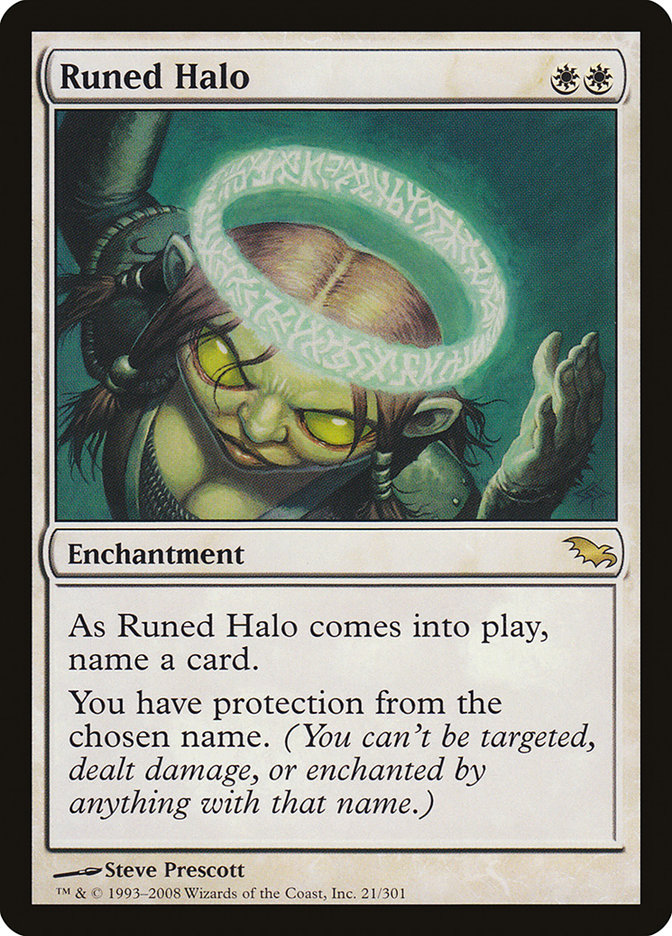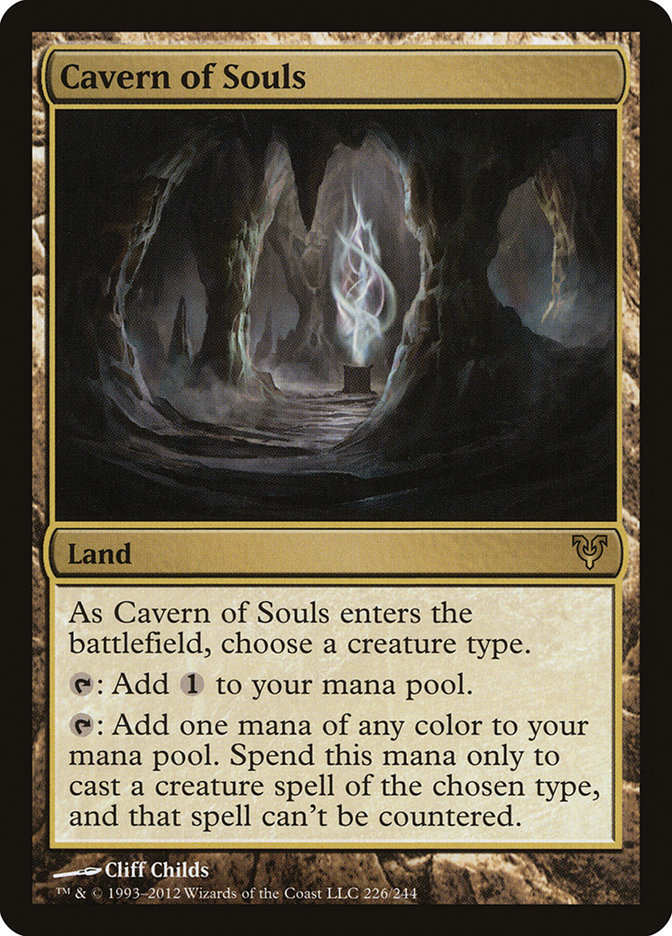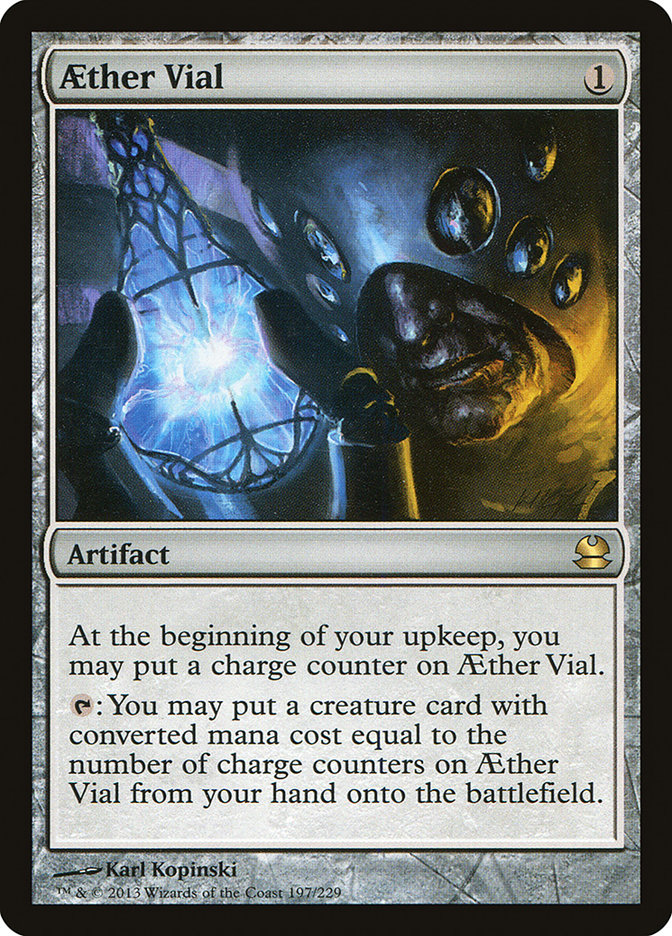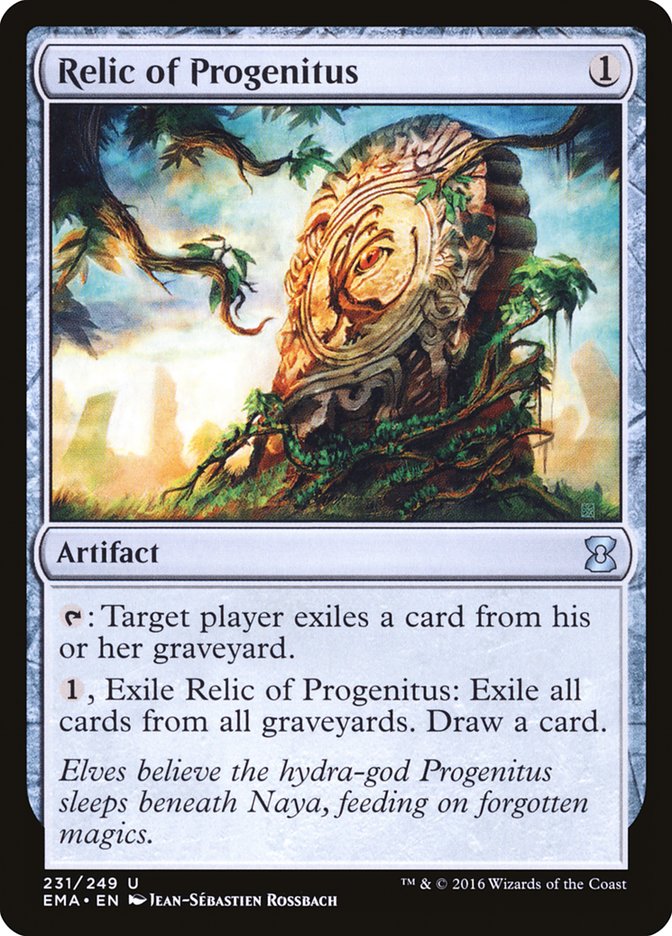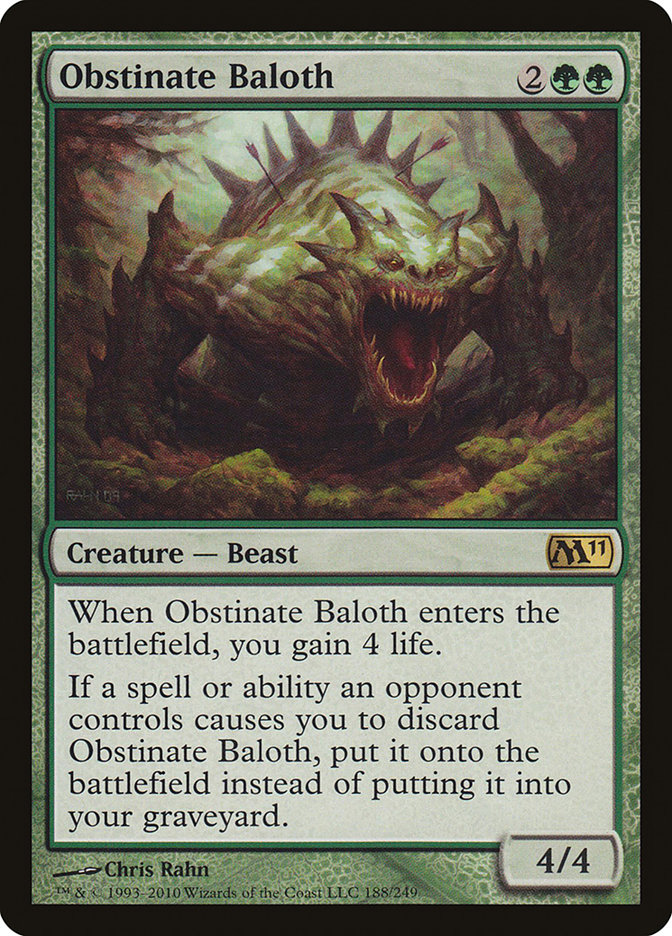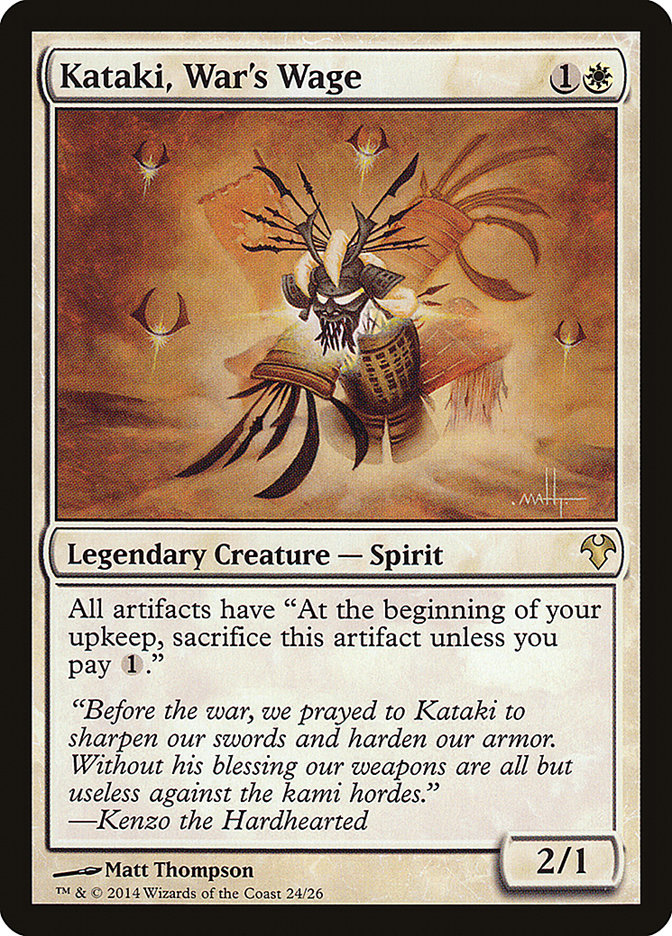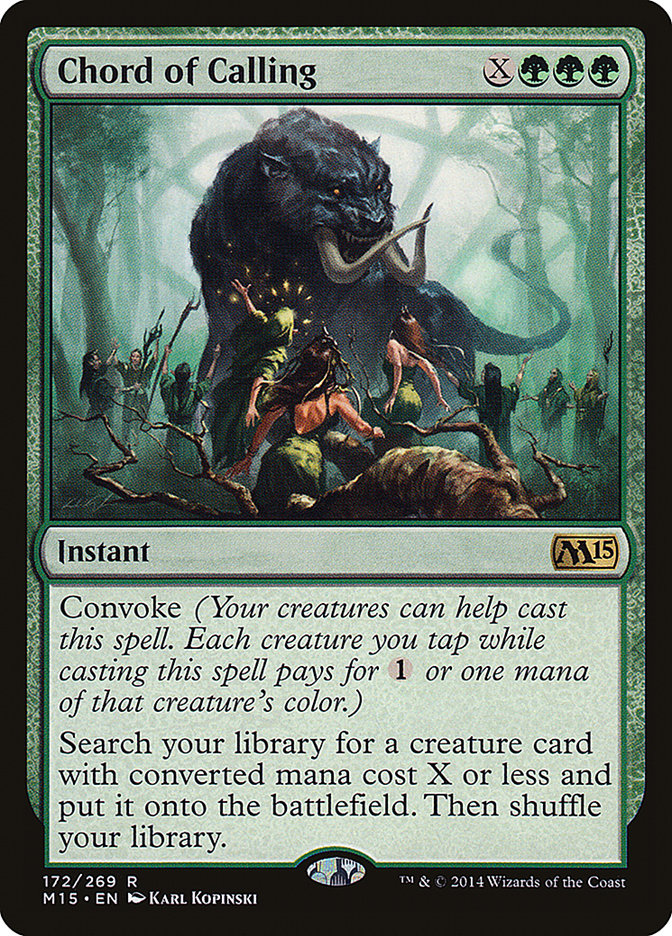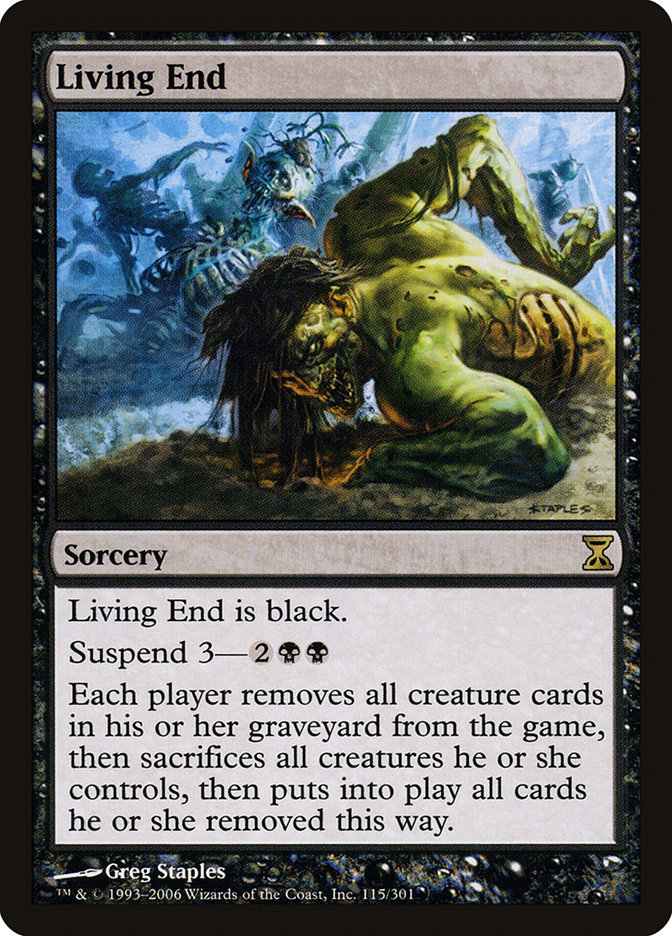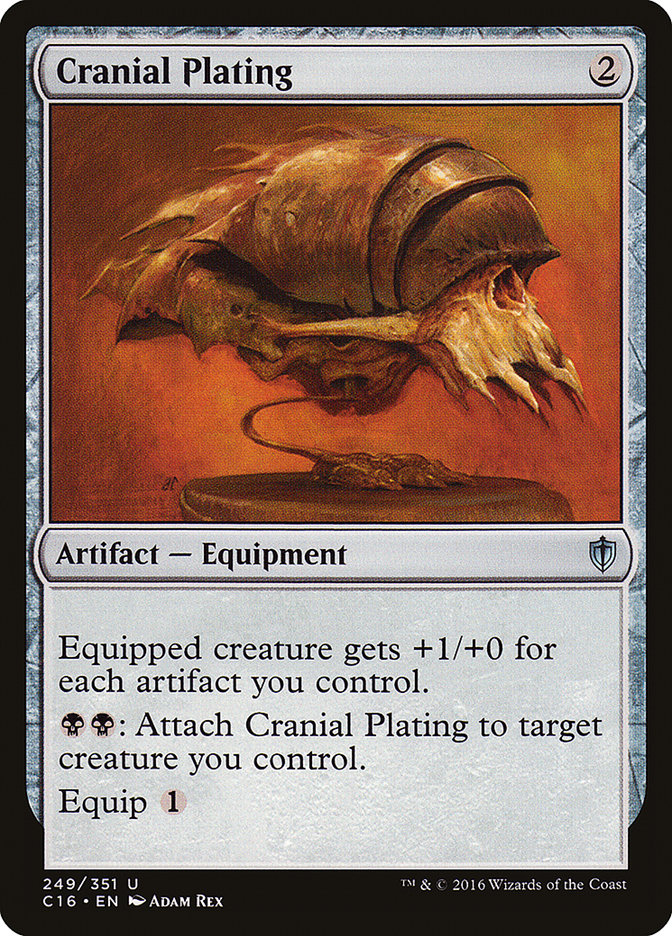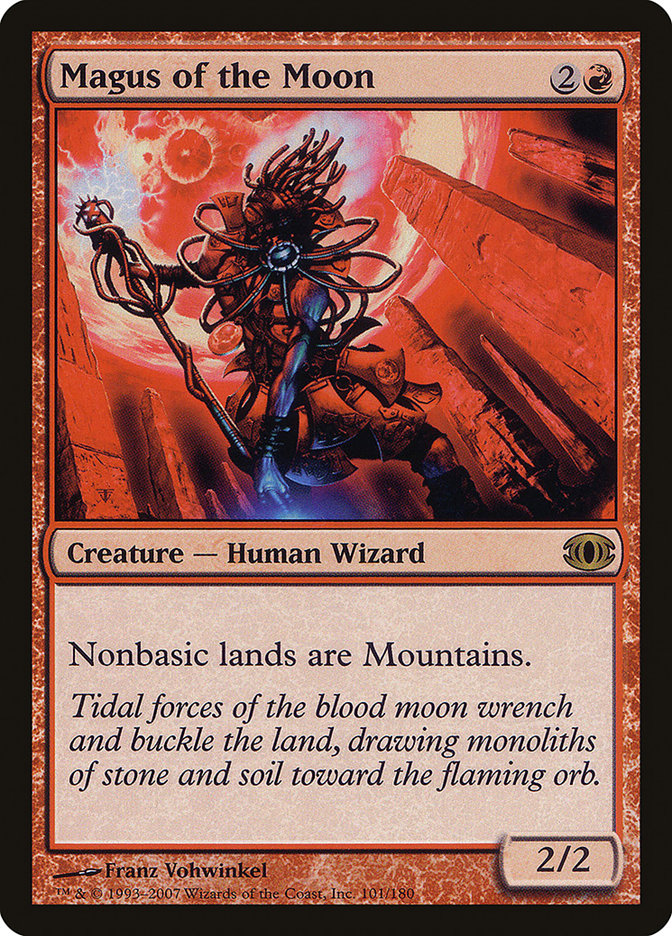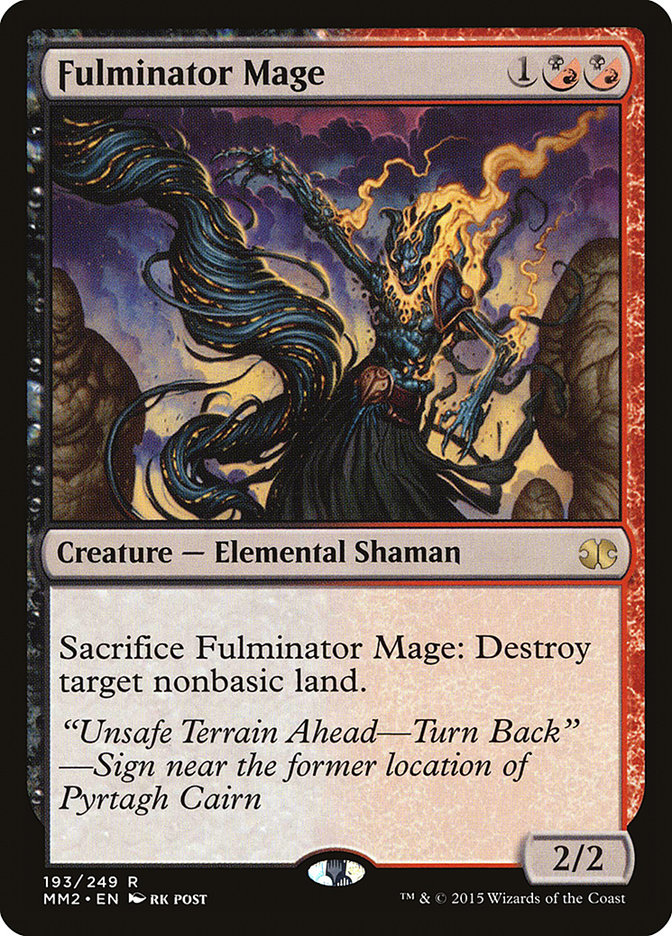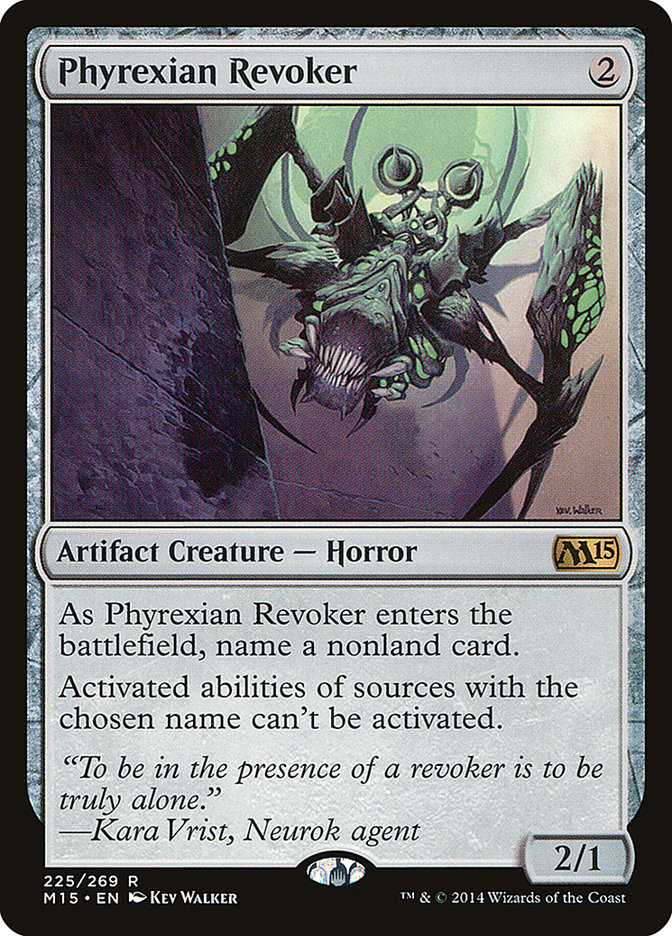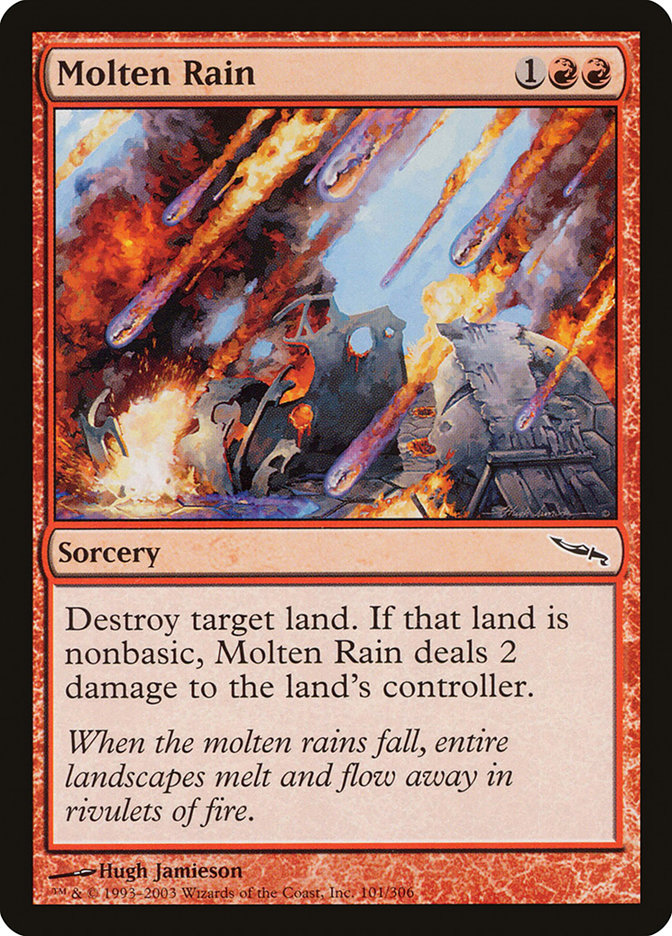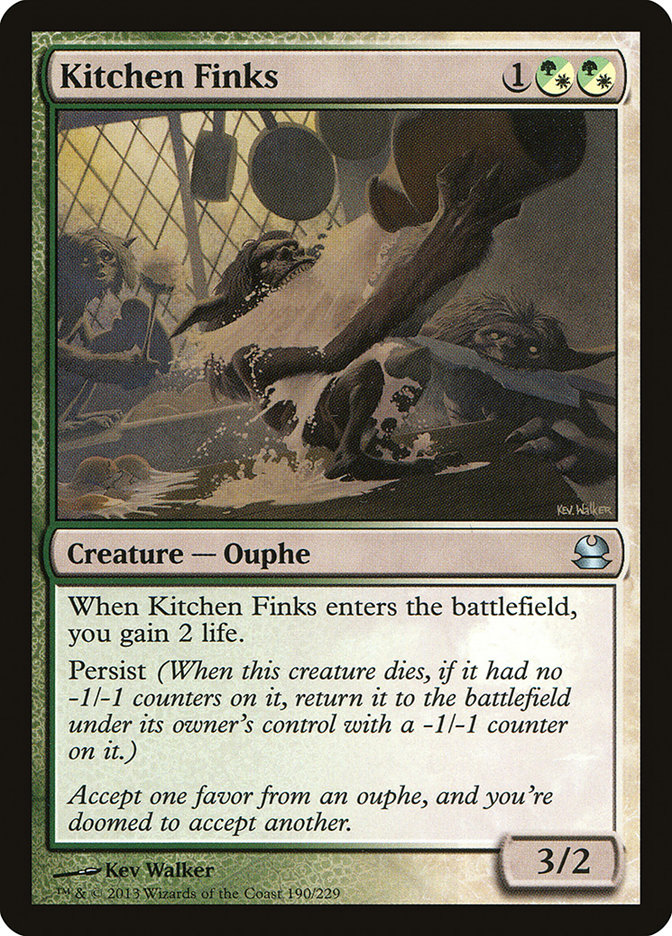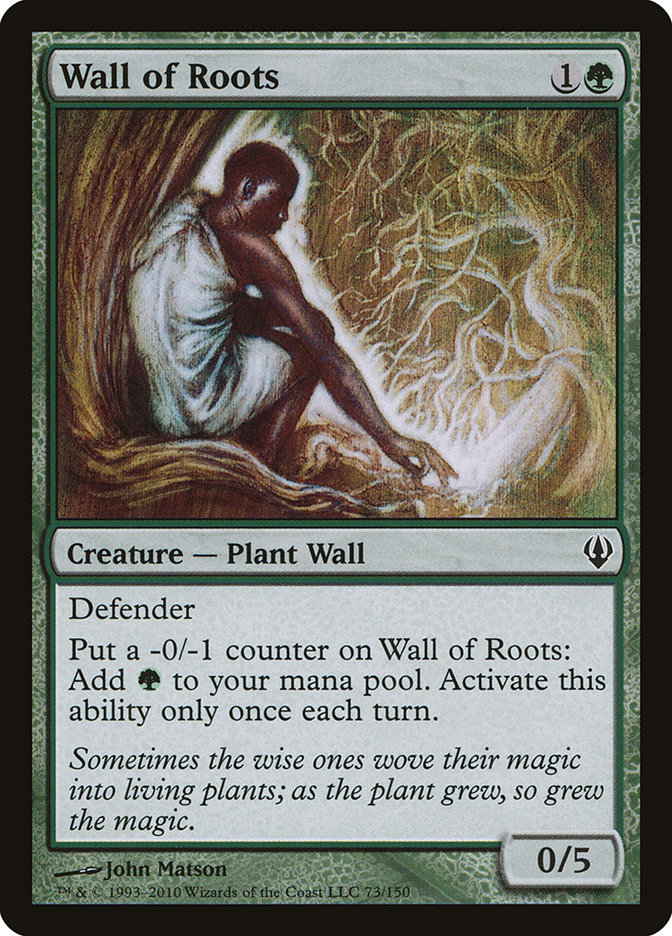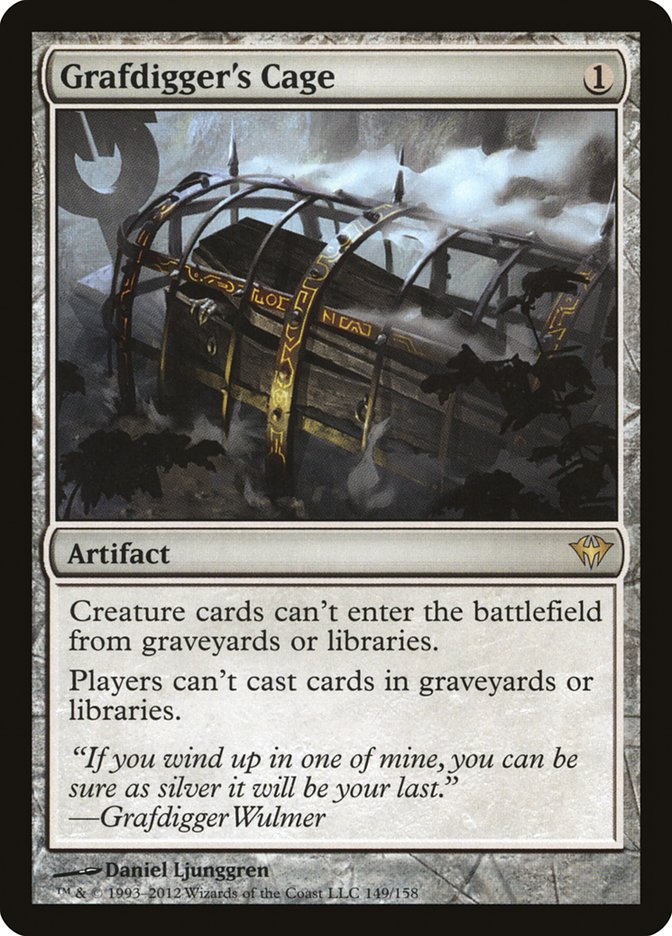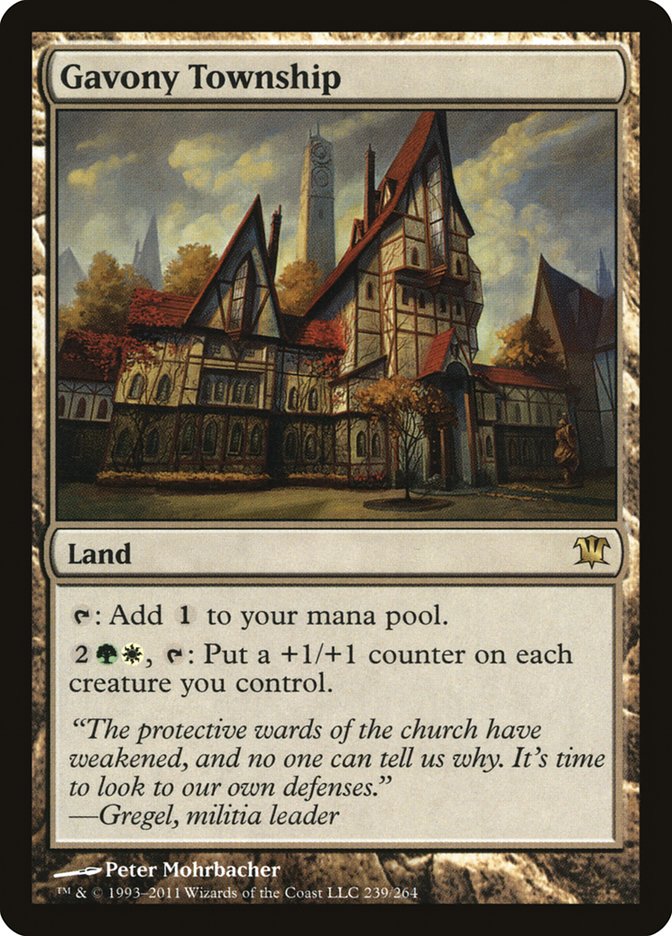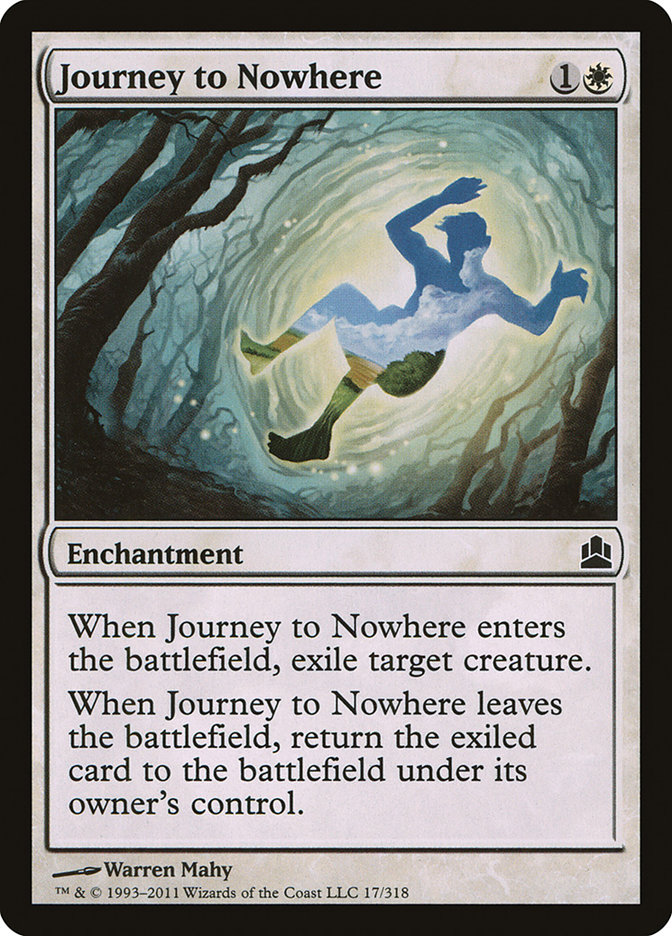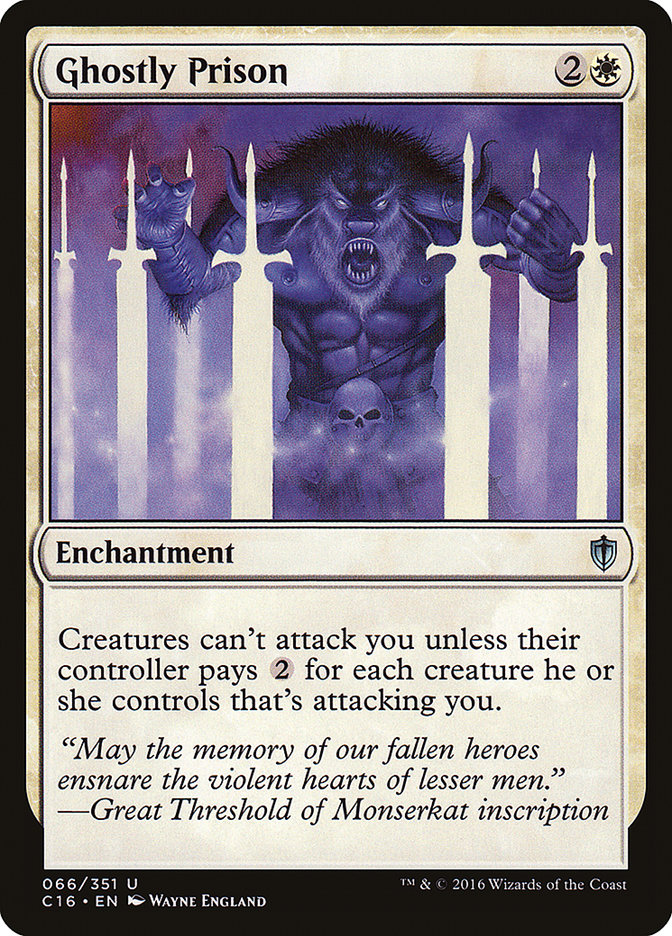Last week I went through the general archetypes of Modern in an attempt to make the format easier to digest.
This week I’m going to explore how those macroarchetypes pair up. Who generally wins each confrontation and why? When the metagame is going one way, what is the next natural direction to look?
While I am putting a label on each matchup, I also want to point out where each matchup is won and lost. Things may change in the future and a sub-archetype might exist that subverts the previous trend, which is actually something you can see looking at the last two months of Modern.
The Grid
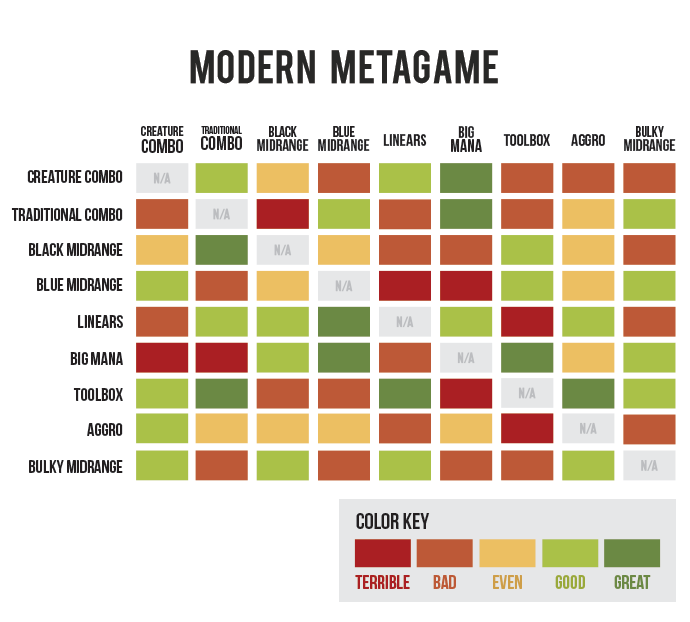
Creature Combo
Creature Combo Mirror:
Who has the best interaction? The clocks aren’t that different between subarchetypes, so the key is figuring out the best way to trip up your opponent.
Creature Combo versus Traditional Combo: Good for Creature Combo
Creature combo is just faster than traditional combo in Modern by design of the format. Full stop. Both decks can integrate interaction with about the same ease, so being a turn faster just all that matters and it’s almost impossible to turn around. The only thing that stops this from being Terrible for traditional combo is that you still win first some amount of the time with good draws or good die rolls.
Creature Combo versus Black Midrange: Even
Creature Combo is just redundant enough to not fall apart in the face of discard and just brutal enough to capitalize when Black Midrange has to expose itself, but it’s no guarantee. Sometimes they draw one threat and all interaction instead of a few too many lands or threats. Or their threat is something that buries you like Dark Confidant. Or you draw one too few protection cards. Lots of variables play out in fairly even ways.
One concept you see a lot in Modern is whose decisions drive the matchup. Who has the ability to change their deck to shift the odds a little? In this case it is clearly Black Midrange, and in the vast majority of Black Midrange matchups it is the driver.
The Creature Combo deck’s options are basically limited to other forms of creatures that are a bit less efficient but harder to answer. Non-creature card advantage doesn’t help as your entire strategy can’t play from behind, so “recovering” on cards without progressing on the battlefield doesn’t matter. Ranger of Eos and Carrion Call come to mind. The Black Midrange deck can sideboard cards that actually do new things: Darkblast to lock the game up, Engineered Explosives to rectify a battlefield. It can shift out of bad cards or readjust numbers.
Creature Combo versus Blue Midrange: Bad for Creature Combo
All of the issues with Black Midrange apply to Blue Midrange. Both archetypes have lots of answers you have to dodge through. The additional issue is that Blue Midrange gets to play tons of threats with Flash.
Against Black Midrange, Creature Combo gets a lot of wins by exploiting them having to extend a threat and drop their shields. You find one spot where they are low on mana and use it to dart through a win. Those spots just don’t exist against Blue Midrange. They kill you more slowly, but every single turn they can leave up mana to answer a combo attempt in combat and flash in a threat later if you don’t go for it.
The most effective sideboard card for Creature Combo is something like Wild Defiance that shuts down a large segment of their removal. It’s still a fundamentally uphill battle.
Creature Combo versus Linears: Good for Creature Combo
Assuming the Linear deck is just trying to do its thing, Creature Combo will come out ahead. It is inherently faster and has an easier and higher-impact sideboard selection.
If the linear deck has incidental hate or interaction, everything is reversed. Eidolon of the Great Revel, Searing Blaze, Living End, and Conflagrate are good examples. This is a big part of why Dredge hit so hard at first: it had built-in outs for Infect.
In practice against the specific linear decks people are playing right now, this is “Bad for Creature Combo.” But overall? That’s only because those specific decks have been selected because their pieces do things against Creature Combo.
Creature Combo versus Big Mana: Great for Creature Combo
One of the things I like to say a lot is “Scapeshift is an eight-card combo.” A single card kills them, but you need seven lands too.
Every time a Big Mana deck spends a card to interact with Creature Combo, that’s one less card it can use to get to its kill. Interaction that self-replaces exists, but it is slow and clunky. How much interaction can you actually play? Does it kill Death’s Shadow (aka not Sudden Shock)? Even if your single card is high-impact, one of the draws of Creature Combo is being able to shrug off the first piece of interaction. Do you actually beat a Vines of Vastwood?
Big Mana also has expensive enablers. Two mana for Sakura-Tribe Elder or Sylvan Scrying adds up. Are you ever going to represent multiple answers a turn?
Big Mana can’t reliably stop Creature Combo without becoming completely non-functional. Maybe you can tutor up a hate card and hope. Good luck with that. Just because Tom Ross nailed some people with Blessed Alliance once doesn’t mean it will work again.
Creature Combo versus Toolbox: Bad for Creature Combo
Toolbox decks have tons of hate options to find. At the bare minimum, Spellskite covers a ton of what is going on, even if something like Melira, Sylvok Outcast doesn’t exist.
Even if the hate doesn’t line up perfectly, the basic sideboard plan of removal plus Eternal Witness is a problem. Toolbox decks can just overload Creature Combo with removal.
Creature Combo versus Aggro: Bad for Creature Combo
Aggro tends towards better individual threats and better answers than Creature Combo. It wins in combat and breaks up combo attempts.
The trend towards bulky and less Zoo-ish Aggro has given Creature Combo more openings to steal games. Anything with Knight of the Reliquary loses points because it won’t always have answers up.
Collected Company and Tribal decks in general also lose ground. These decks need to be highly threat-dense for their synergies and in turn are answer-light, making Blighted Agent or Death’s Shadow game over. I still want to be on the Aggro side, but things are closer barring built-in interaction like Harbinger of Tides.
Aggro also has better sideboard options. It can load up on removal and not fall apart, while putting a bunch of removal into Creature Combo is just repositioning to be an Aggro deck or risking drawing all the wrong pieces.
Creature Combo versus Bulky Midrange: Bad for Creature Combo
Bulky Midrange is a relatively new archetype, and the entire time it has existed Creature Combo has been the deck to beat. If it couldn’t do that, it wouldn’t exist. The whole thing starts with good one-mana removal being locked into the deck. You actually have the tools to stay alive to cast things.
Past that, you have a lot of ways to just shut down the game for Creature Combo.
I’m not saying you never have games where you miss a piece and just die, but you have the tools. Despite looking structurally similar to Big Mana, you can afford to play more interaction and have earlier game-winners.
Takeaway:
The specific cards to beat each Creature Combo deck don’t overlap well, but the general plan of overloading with removal is successful. Creature Combo also can’t sideboard excessively without losing a lot of their gameplan. That being said, racing is going to fail, and if you are just a little bit too light on action, your win percentage falls off quickly against Creature Combo. Just on raw power level Creature Combo is going to outperform its macro-archetype matchup expectations.
Traditional Combo
Traditional Combo Mirror:
The interaction between combo decks in Modern is rare and generally not good enough to hard-stop another deck. Whoever is faster in a mirror is usually a huge favorite.
Traditional Combo versus Black Midrange: Terrible for Traditional Combo
Traditional Combo in Modern falls into one of a few categories of kill conditions. They all have issues with Black Midrange.
If you have to resolve a permanent, it probably dies to Abrupt Decay.
If your key card is expensive, you are likely low on redundancy, so that first discard spell is fatal.
If you go through the graveyard, there are numerous ways to stop that.
Sometimes Black Midrange gets inbred and loses the specific tool for your deck, but odds are something is in the sideboard. The literal best case is that you are jamming into heavy discard and hoping to topdeck your way out, which is not great.
Traditional Combo versus Blue Midrange: Good for Traditional Combo
Proactive versus reactive. While an Inquisition of Kozilek just picks Combo apart, Mana Leak is something you can play around. Proactive answers also let you take action to stop your opponent and then cast a threat without worrying about counter mana and the blue threats also close more slowly. Flash also matters less when half the Combo decks kill at instant speed.
Blue Midrange can fight by overloading on countermagic and flash threats, but in return Combo has tons of good tools: discard, Defense Grid, cheaper counters, and so on. If Traditional Combo wants to win it easily can, though Blue Midrange tends to have to go less out of its way to play the relevant cards.
Traditional Combo versus Linears: Bad for Traditional Combo
The Linear decks tend to be a little faster and more powerful than Traditional Combo across the board. The classic example of this was Affinity outracing everything pre-Become Immense. As seen with Creature Combo, the faster deck in these goldfish races is ahead.
Traditional Combo also has a bit of an issue where it can’t play the best hate against everything. For example Ad Nauseam has to settle for Hurkyl’s Recall over Stony Silence to avoid shutting off its own mana, and a temporary reset is much worse than a full lock.
It’s also much easier for the Linear deck to have the right card. Negate or Collective Brutality is good against multiple things, whereas that graveyard hate card just hits Dredge.
To checklist: behind Game 1, less likely to have sideboard cards, and access to best sideboard cards might be limited. Not a good spot.
Traditional Combo versus Big Mana: Great for Traditional Combo
Remember all that stuff about Big Mana struggling to interact with Creature Combo? Imagine all that, but your green cards have to fight on the stack. Sure, you could Relic of Progenitus and maybe…. make them slightly worse at going off but still capable?
Traditional Combo versus Toolbox: Bad for Traditional Combo
Ignore the specific hate card thing. They probably have Eidolon of Rhetoric, but pretend they don’t.
Their broader interaction still shreds you. They don’t just Sin Collector you once; they do it, then hit again. Or they just stick Glen Elendra Archmage and laugh.
The one exception to this is Goryo’s Vengeance. Instead of giving creature combo time to set up a Chord of Calling, you kill them when they just have a Birds of Paradise on the battlefield. Or you completely brick and die. Either way, it isn’t fun for someone.
Traditional Combo versus Aggro: Even
Traditional Combo is about a turn faster than Aggro with Aggro rarely having good enough interaction to matter…. Game 1.
Aggro’s sideboarding definitely drives the matchup. You can have specific interaction, but if I were playing Aggro, I wouldn’t sweat the Traditional Combo matchup too much if I just had a few incidentally good cards with broader applications. Each time you hit them with a piece of interaction slows them significantly more than their Lightning Bolt slows you. Note that this often includes artifact and enchantment removal, as it hits the mana or engines out of many combo decks.
Traditional Combo versus Bulky Midrange: Good for Traditional Combo
Skred doesn’t kill Phyrexian Unlife. Four-mana planeswalkers aren’t the way to race. Sure, you can sometimes get Chalice of the Voided, Leyline of Sancity-ed, or Blood Mooned, but single-permanent threats are generally things you can play around.
It’s also worth noting that Chalice of the Void for one doesn’t beat most of the Traditional Combo decks in Modern. It really doesn’t even actually beat most of the combo decks in Modern on any number.
Takeaway:
Despite dodging “creature removal,” it is much easier to hit Traditional Combo with broad interactive strokes than it looks. It loses a lot of metagame ground because of this splash damage.
Black Midrange
Black Midrange Mirrors:
Black Midrange mirrors are defined by hard-to-answer threats and two-for-ones. Someone eventually gets into a spot they can’t respond to with answers, at which point the game ends.
Black Midrange versus Blue Midrange: Even
Blue Midrange is inherently behind in large part because discard spells and the information they produce tend to trump reactive counterspells in these matchups. Pop a hole in their defenses and run right through it.
That being said, Blue Midrange has access to tons of single cards that bury Black Midrange. They have attrition tools and few two-for-ones; you have massive card advantage engines.
Over the last year or two there has been a big shift in the matchup. These key cards have become actually playable instead of clunky matchup specific tools. Ancestral Vision’s unban was only a small part of this, and arguably new releases have been a bigger part of the shift.
Fighting back from the Black Midrange side comes not just from trying to match them on cards, as you won’t keep up in the long run. You have to play the proactive role and push ahead on the battlefield while getting ahead on cards. Force their hand to keep from getting run over so their big recovery leaves them still battling back from behind.
While before the matchup was pretty clear-cut with one side just out-positioning the other, now you have a fairly dynamic matchup where I wouldn’t say either side is far ahead. Welcome to new Magic, where spells with mana costs are the good ones.
Black Midrange versus Linears: Bad for Black Midrange
Black Midrange is an attrition deck. Most of the Linear decks exist to ignore attrition.
Black Midrange isn’t completely out of things to do, but they aren’t the real killers you need to win.
Good sideboard cards do exist, but here’s where we learn a key upside of Linear decks in Modern. How many raw cards can you dedicate to any one strategy? Maybe three on a good day? Is that enough to beat Dredge? If you are playing Black Midrange, your hate card tally needs to be boosted by multipurpose cards.
Black Midrange versus Big Mana: Bad for Black Midrange
Remember how Blue Midrange uses card advantage engines to break Black Midrange’s attrition lock?
Imagine if, instead of putting someone ahead a couple of cards, those cards just ended the game.
Big Mana has always had a good Midrange matchup because every single card is a hard- or impossible-to-answer game-ender. Eventually something gets through. Black Midrange can steal games with the right combination of discard, mulligans, and poor draws, but Big Mana is a solid favorite to draw the game-winner.
If you are sideboarding from the Black Midrange side, look for effects that are assured knockouts. Don’t mess around with Fulminator Mage; the one turn it buys you isn’t worth much.
Black Midrange versus Toolbox: Good for Black Midrange
Every card in Toolbox is a creature, which is the easiest card type for Black Midrange to interact with. Toolbox decks also tend to have a lot of specialized creatures that just aren’t worth a card against Black Midrange. This makes Black Midrange’s default plan of “kill all your relevant cards” very easy to execute.
The way Toolbox decks win is by chaining long streams of two-for-ones and eventually burying Black Midrange. A lot of cards exist that do this, but for the most part they do nothing against the non-Midrange part of Modern. One of the key aspects of building Toolbox decks is figuring out how many slots you can spare to combo hate and still have enough grindy cards to beat Black Midrange, and, beyond that, if it is even worth it.
Another issue is that Black Midrange has a lot of must-kill creatures. Not even big creatures you have to eventually break through, but actual threats you have to immediately kill or you will die. There are only so many Path to Exiles you can play and still have a functional Chord of Calling or Collected Company. Again, this is a fine balancing act.
Toolbox can beat Black Midrange, but it comes at a very real cost across the board.
Black Midrange versus Aggro: Even
This might seem odd for those who see Aggro as Wild Nacatl and Kird Ape that lost to Lightning Bolt into Tarmogoyf, but over the years the definition of Modern-playable Aggro has shifted a lot.
Instead of “mono-dies to Lightning Bolt,” Aggro includes a lot more hard-to-kill creatures. Lots of Black Midrange’s attrition tools fall short and start struggling to have the right answers at the right time. They can do this and have multiple ways to do so, but the number of games where they fall short is new and shocking.
The way Black Midrange fights back is by really meaning it with its removal slots. You have to trade speed and flexibility for just killing the thing you point at. It really doesn’t take a huge commitment, as your first fifteen ways to trade cards are only slightly not good enough, but you do need to shift in a specific direction to get there.
Black Midrange versus Bulky Midrange: Bad for Black Midrange
“Hey, what is good against Black Midrange?”
“I don’t know, some weird disruption sometimes, bigger threats backed by answers to maintain and then break parity?”
“What about my deck of cheap removal, lock pieces, and big planeswalkers?”
“…Yeah, you’re probably in the clear.”
Takeaway:
The last year has not been kind to Black Midrange. Many archetypes have really fleshed out to be contenders in pseudo-mirrors or just go over the top of it. The deck is still good, but it is no longer the cap on what you can do in Modern.
Blue Midrange
Blue Midrange Mirrors:
The key to Blue Midrange mirrors is either finding some threat you can slip in through the interaction wall or finding the most efficient way to win the fight over whatever breaker you do try to resolve. Cheap counters, card draw, and hard-to-kill threats. Classic blue mirror cards.
Blue Midrange versus Linears: Terrible for Blue Midrange
Black Midrange has always had more flexible answers than Blue Midrange. Compare Abrupt Decay to Lightning Helix (forget that Burn is a thing too). A lot of the Game 1 incidental interaction Black Midrange leans on to make a coherent deck post-sideboard just doesn’t exist for Blue Midrange.
You really need the exact hate card for the matchup in the right quantities. This usually means that, on a given day, your Blue Midrange deck can only pick one category of linear deck to beat. When you see things like now where Lantern and Dredge are good, your Blue Midrange deck has to just choose wisely and hope to dodge one of the two.
Blue Midrange versus Big Mana: Terrible for Blue Midrange
I’ve won one game of Magic off a three-card hand that didn’t include Bazaar of Baghdad. It was in this matchup.
The same things apply from the Black Midrange matchup, but your clock is just slower, so you never get to trip up their early mana and close. There are so many cards in Blue Midrange that just don’t matter. The typical generic counterspell of Mana Leak is easily blanked and Negate doesn’t counter Primeval Titan or Ulamog, the Ceaseless Hunger. All around, it’s just bad.
Note that this may change if you load up on counters that actually do things. The problem is that so few of those counterspells are actually good against the rest of Modern. Corey Burkhart made it to the finals of Grand Prix Dallas with a full playset of Cryptic Commands.
The hate cards for the specific Big Mana deck do exist, but as I mentioned last week, they don’t really overlap well between the different big mana decks.
Blue Midrange versus Toolbox: Good for Blue Midrange
Much of the same things from Black Midrange apply here. Lots of answers, lots of cards Blue Midrange can safely ignore.
One difference between Black and Blue Midrange is the need for removal out of the Toolbox deck. Where Black Midrange tends to be full of bulky or game-ending threats, Blue Midrange has creatures that incidentally kill you after you run out of real cards. This typically improves Game 1 against Blue Midrange, as removal tends to be more of a sideboard option.
There is also a specific “hate” card that attacks the matchup from all angles in Voice of Resurgence. It isn’t just about stopping countermagic; it’s about being able to make moves into flash creatures and removal without fear on top of having a two-for-one built in.
Overall, this tends to make it a little easier for Toolbox decks to skew to beat Blue Midrange decks. They also tend to be significantly ahead in the matchup when they do decide to move in that direction. But the natural state of the deck is to be pretty far behind. Similar to Black Midrange you either don’t have enough and your win percent drops off or you have crossed the magic threshold and are ahead.
That doesn’t mean Blue Midrange is out of tools to fight back. The biggest gain it has relative to Black Midrange is the ability to disrupt the powerful tutor effects Toolbox decks lean on after mana has been sunk into them. Just relying on Collected Company to carry you isn’t going to work, because Dispel or Negate will get Snapcaster Maged after you topdeck the second one.
Blue Midrange versus Aggro: Even
Same as with Black Midrange, this has a lot to do with the changing definition of Aggro over the years in Modern. Blue Midrange destroyed low-to-the-ground Aggro that had issues with Lightning Bolt. Now we see more Aggro decks with harder-to-kill threats that require more specific answers.
Fortunately for Blue Midrange, it has Snapcaster Mage to make up the difference. Where Black Midrange had to sideboard into additional copies of its hard removal, Blue Midrange just has them built in. It has four copies of Path to Exile that it can cast multiple times. It might even naturally play Supreme Verdict!
Aside from not drawing enough of the right answers, one of the ways Blue Midrange can lose is drawing the “right” answers but having them be blanked by a specific card. Mana Leak handles Reality Smasher, but only if Cavern of Souls isn’t on the battlefield. This is a huge consideration in sideboarding for the matchups where these anti-counterspell cards pop up! Have a plan.
Blue Midrange versus Bulky Midrange: Good for Blue Midrange
“Hey, what’s good against four-mana sorcery-speed threats?”
“I don’t know, counterspells? Snapcaster Mage targeting counterspells?”
“Ah, yeah, thanks for reminding me.”
Takeaways:
1. Snapcaster Mage works miracles.
2. The key to beating Blue Midrange is marginalizing their countermagic and the recursion of it.
Linear Decks
Linear Mirrors:
Smash. See who smashes harder. Sideboard. See who draws better sideboard cards. When people complain about “skill not mattering in Modern,” this is it.
Linear versus Big Mana: Good for Linear Decks
This matchup is very much a race. Big mana tends to have two kinds of “I win” threats: ones that don’t actually kill your opponent on the stop, and ones that are a bit slower but do. Linear decks overwhelm the first and outrace the second. Sideboarding helps, but if Linear decks folded to sideboarding, they wouldn’t exist in Modern.
One thing that does tend to happen in this matchup is the Big Mana deck might have incidental hate in Game 1. This might turn a specific Linear matchup into one that is solid or favorable depending on how impactful the card is.
Linear versus Toolbox: Terrible for Linear Decks
One sideboard slot. That’s all it takes. One sideboard slot and you get five total copies of that card plus Chord of Calling to find to crush your opponent.
That’s not even counting any good incidental interaction Toolbox decks have, like Scavenging Ooze. That’s not counting the Toolbox deck also just being a combo deck.
The Linear deck needs something really, really big to break this in its favor. Those effects exist, but even then the Toolbox deck just has to find the one perfect card to crush the matchup.
Linear versus Aggro: Good for Linear Decks
This is a matchup that has drastically improved as “Aggro” has been redefined to be a bit less lean over the years. While Wild Nacatls could keep pace with the Linear cards, now the Linear deck just gets to do its thing pretty unopposed and is generally faster. Hate cards or bust.
Linear versus Bulky Midrange: Bad for Linear Decks
“Hey, are maindeck hate cards a problem for Linear decks?”
“……”
“………”
“……………”
Takeaway:
Your bad matchups with Linear decks are the ones where your opponent shows up with maindeck hate or giant piles of sideboard hate. If you are concerned about beating a Linear deck, realize it will cost you fewer total slots if you have some relevant cards for Game 1.
Big Mana
Big Mana Mirrors:
This is another complaint-worthy matchup on the surface, but threat selection matters. Having the threat that actually kills them or breaks up their mana is the key. If they don’t lose or lose lands, the “win condition” probably isn’t a way to win.
Big Mana versus Toolbox: Great for Big Mana
Toolbox aims to beat most combo-esque strategies with a hate creature. It turns out the only hate creature that is super-effective against Big Mana is really easy for them to answer and doesn’t actually set them back if it dies. Big Mana is the faster deck in a non-interactive setting and just wins.
Toolbox can in theory sideboard a set of cards that covers a lot of angles a specific Big Mana deck attacks from, but at the end of the day, it won’t help you win Game 1, and the cards you are playing don’t have breadth.
Big Mana versus Aggro: Even
The slower Aggro decks have a bit of interaction; the faster ones don’t. The Big Mana decks have a bit of interaction. Faster Aggro is a bit faster than Big Mana in the dark, but the bulkier Aggro decks are about the same speed.
Aggro definitely has the sideboard edge here, but it isn’t really exercised right now in quantities that matter. It’s more likely a card like Negate or Stubborn Denial is showing up to sometimes matter.
Big Mana versus Bulky Midrange: Good for Big Mana
Blood Moon beating Big Mana decks is the biggest lie in all of Modern. The Bulky Midrange decks don’t actually put you on a clock. If they have their perfect card, you have plenty of time to sit around and either answer it or just resolve a threat anyway. Karn Liberated is still perfectly castable off seven Mountains.
Takeaway:
Big Mana is one of the worst decks at sideboarding in the format. It is also the slowest of the non-interactive decks. It wins based on resilience. Also, Blood Moon plus clock beats Big Mana, not Blood Moon and twiddling your thumbs.
Toolbox
Toolbox Mirrors:
There are three levels here: who combos more quickly, who is better at stopping the other person’s combo, and who is best at winning the post-crippled combo fights. Either try to combo quickly with enough removal and protection to stop their hate and answers, or try to have so many answers they won’t be able to go off and have the best threats for later fights.
Toolbox versus Aggro: Great for Toolbox
Aggro is not killing the Toolbox deck quickly enough to prevent them from setting up. Once things are bogged down, you are talking about one deck that is built to start pulling Commander-level shenanigans on stalled battlefields and one that does approximately nothing then.
Grafdigger’s Cage is not good enough to shut down the Toolbox decks out of Aggro. They just have too many different ways to piece together something better. My favorite wins with Toolbox decks are always against Hatebears decks. Leonin Arbiter? Oh, darn, how can I ever win after casting Path to Exile three times anyway? Oh no my creatures have all of these +1/+1 counters I’ve run out of dice please send help.
Toolbox versus Bulky Midrange: Good for Toolbox
This may be bias on my part, but I’ve always been happy playing against Bulky Midrange decks with Toolbox. There are only so many pieces of hate they can have that matter and Toolbox decks can usually push through them. Even in Game 1 scenarios, you will have access to answers you can use and recur.
Planeswalkers are also much worse threats against the deck with 30 creatures. You can’t Skred them all; something is going to chip away at it.
The most important card out of Bulky Midrange is going to be Anger of the Gods or some other way to regain parity. The problem is that Toolbox decks won’t have a real reason to overextend into that spell because Bulky Midrange doesn’t put enough pressure on them.
Takeaway:
Toolbox decks are very reliant on having specific cards to beat the non-interactive decks but have to minimize those slots in game ones to beat the interactive ones. They are the ones driving the result of every matchup and playing one is the process of making every card count.
Aggro
Aggro Mirrors:
Aggro mirrors haven’t changed since the printing of Tarmogoyf. The biggest creatures and the cards that kill them are what matters. More removal and threats that stand on their own will win you the mirror.
Aggro versus Bulky Midrange: Bad for Aggro
This is based on the current iterations of Aggro and Bulky Midrange. Bulky Midrange is heavy on answers to creatures and heavy on planeswalkers that can kill creatures. Specifically, a lot of these answers are clunkier ones that are good against the “resilient” threats Aggro is moving towards.
What if Bulky Midrange turns back towards hate permanents? That certainly makes the matchup better for Aggro. First, they have to be playing cards that matter against Aggro, which is not assured. Second, Aggro now has a route to victory via Disenchanting the right piece and watching everything fall apart.
Takeaway:
Aggro is one of the few decks with fairly flat matchups. It also doesn’t win in flashy memorable ways, so people tend to view the powerful sideboard options like Wrath effects as not as relevant.
Bulky Midrange
Bulky Midrange Mirrors:
“Is Blood Moon good against a Blood Moon deck?”
“No”
“What about Chalice of the Void against a Chalice of the Void deck?”
“……”
“Duel Decks: Nahiri vs. Koth it is!”
Takeaway:
Bulky Midrange was kept down for a long time by Splinter Twin existing. Attacking it from those combo and tempo angles is going to be the best way to take it down. It is also super durdly at times, which means being able to break out of a stranglehold is a valuable plan against them.
Overall Takeaways
Every deck is going to have some polarized matchups, but if that is what concerns you, there are archetypes with fewer autowins or autolosses.
The specifics still matter. The majority of matchups can be pushed from the expected result by playing a specific deck. This is the biggest skill in Modern deck selection: knowing the sub-archetype well enough to choose the one that compensates for the weakness that matters that week.
Even the summarized Modern metagame is deep. It’s easy to see how people get lost in it. Whenever you feel that starting to happen, just abstract it out a level. In the big picture, what are you trying to accomplish? Then apply the specifics.


